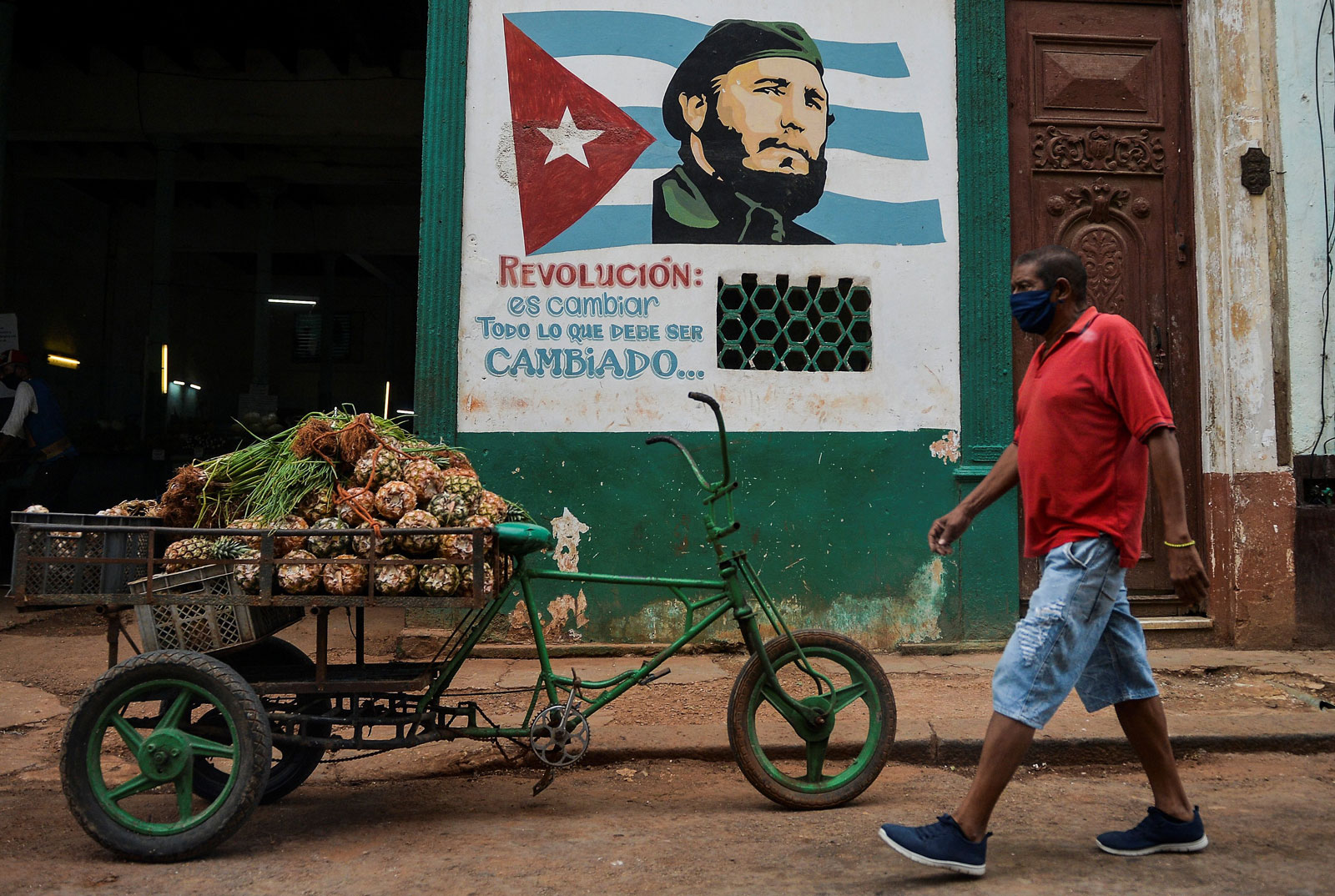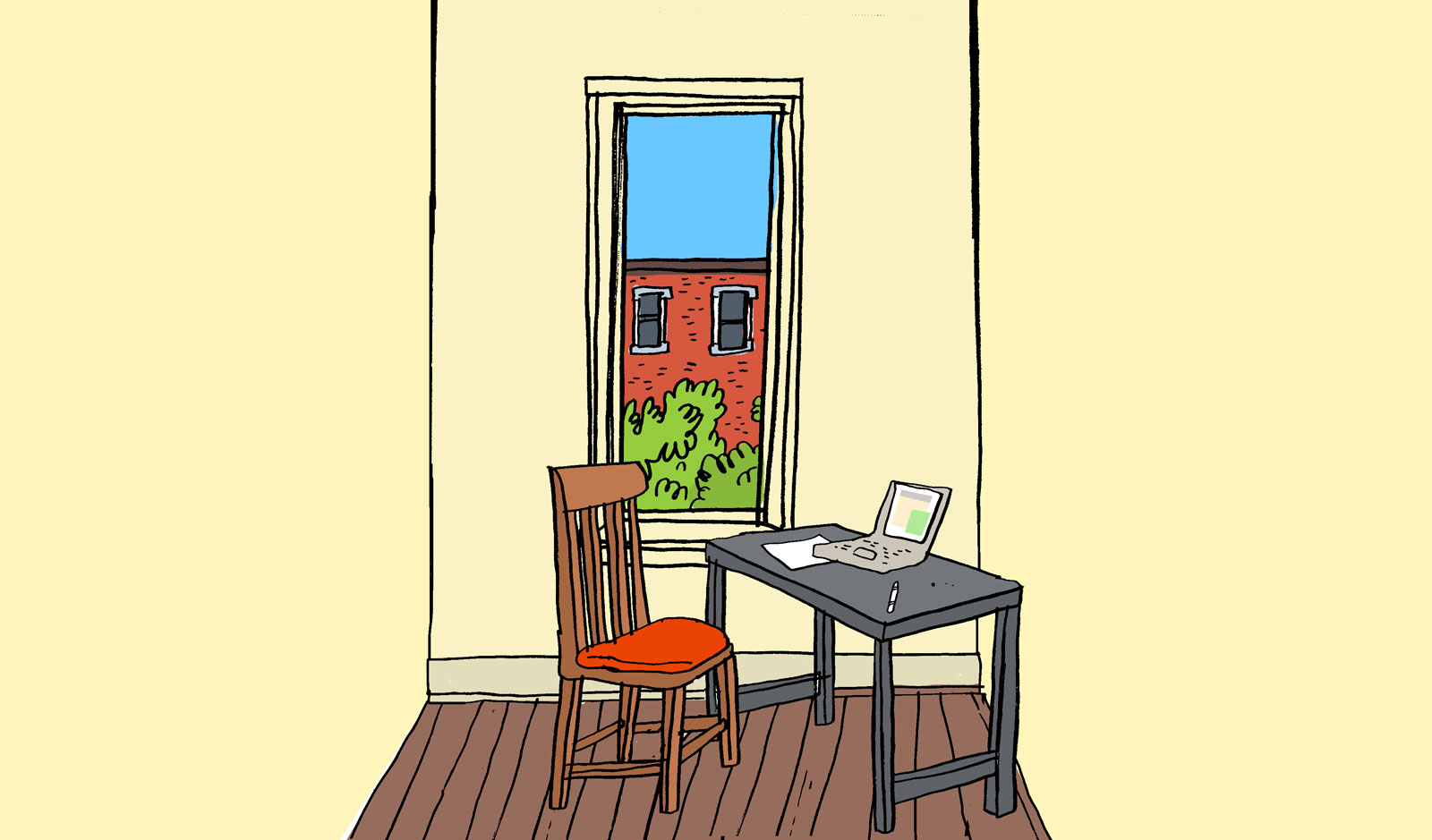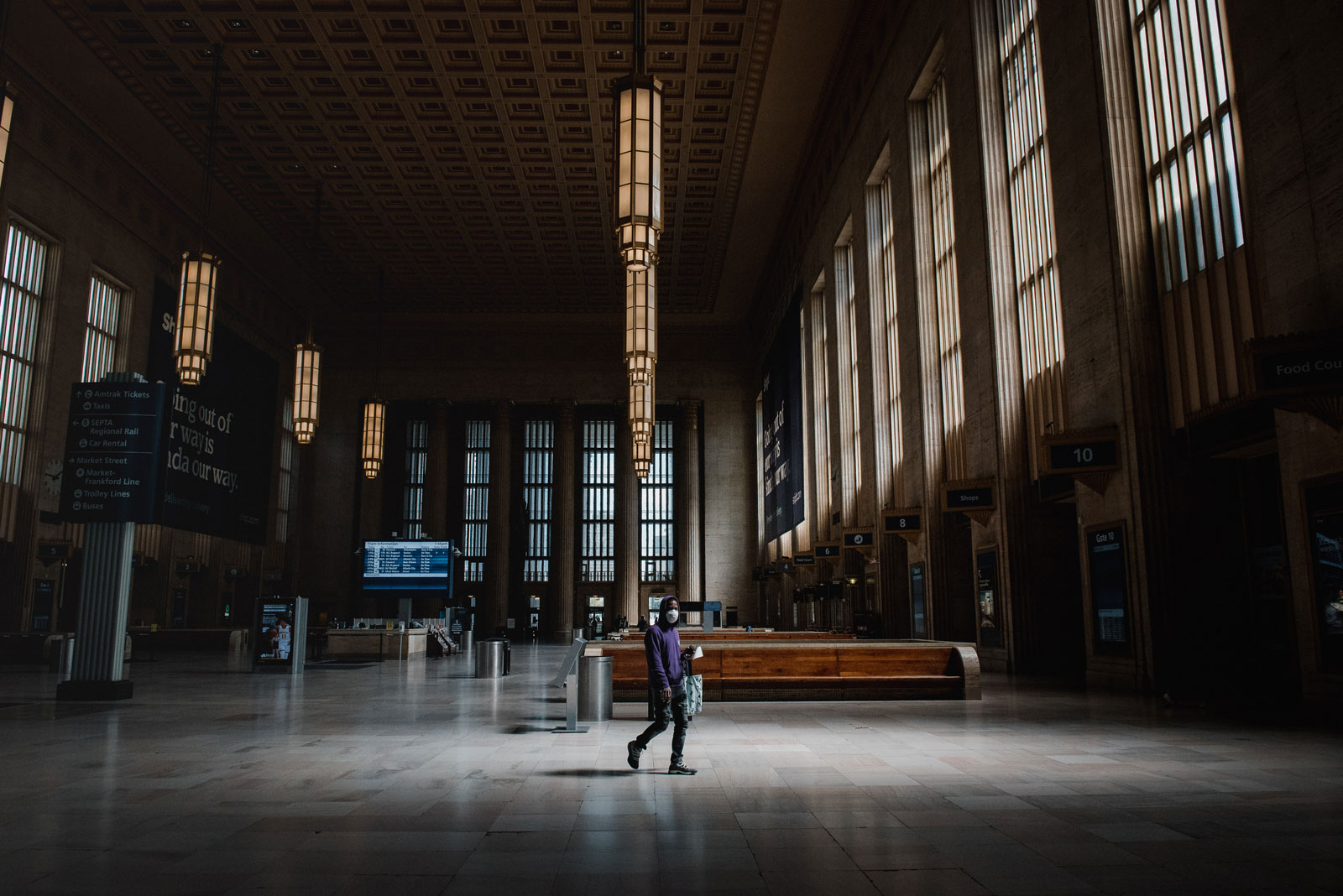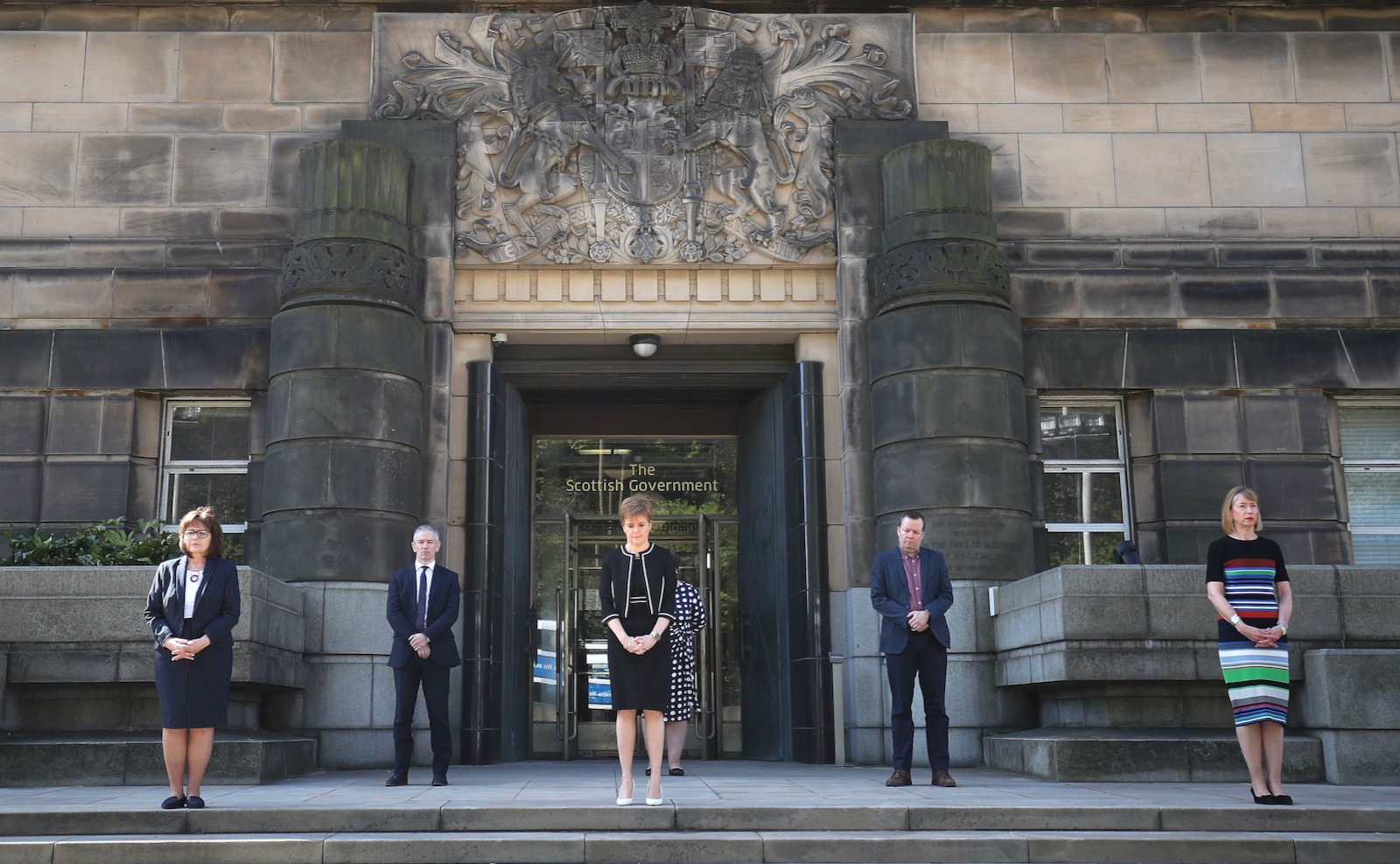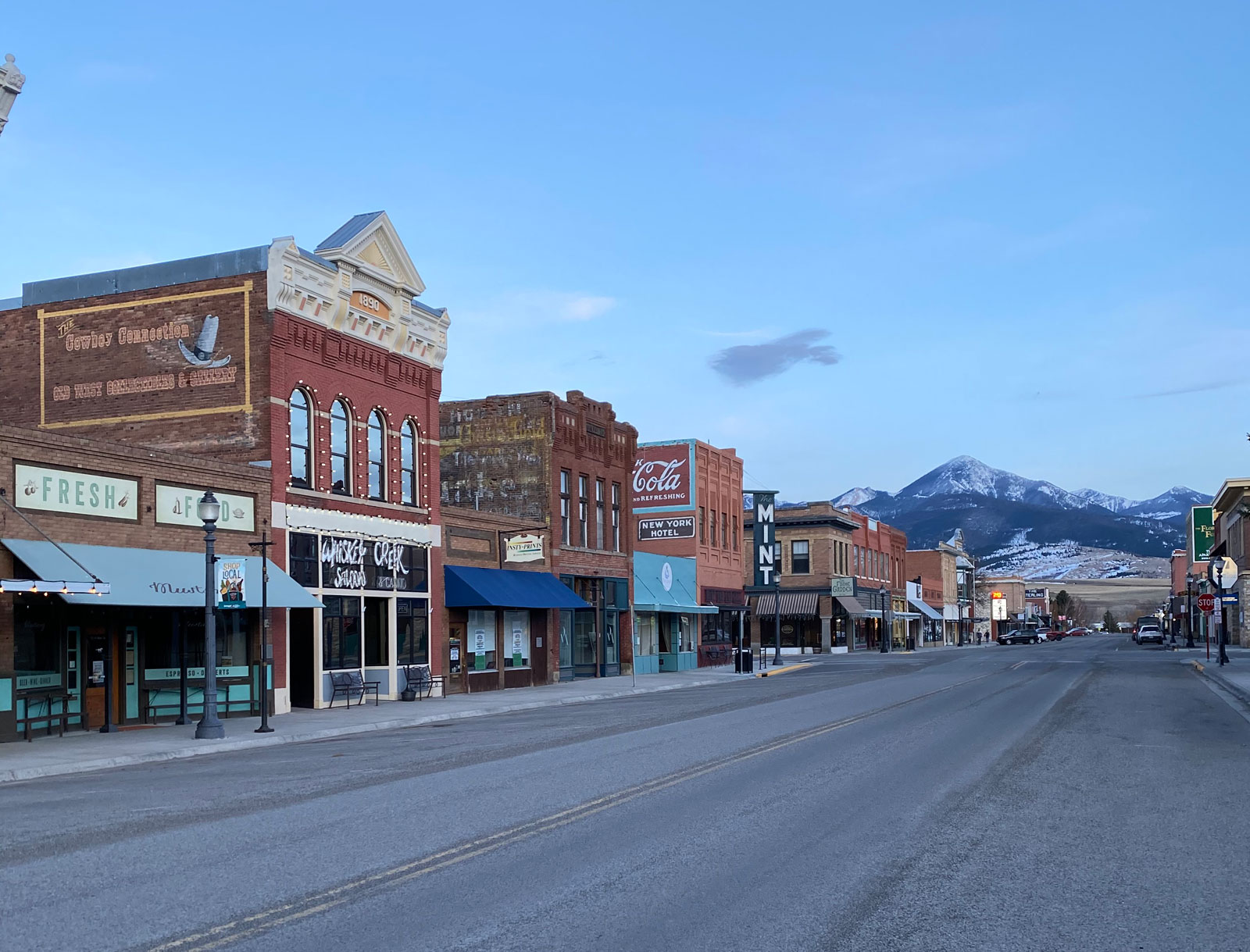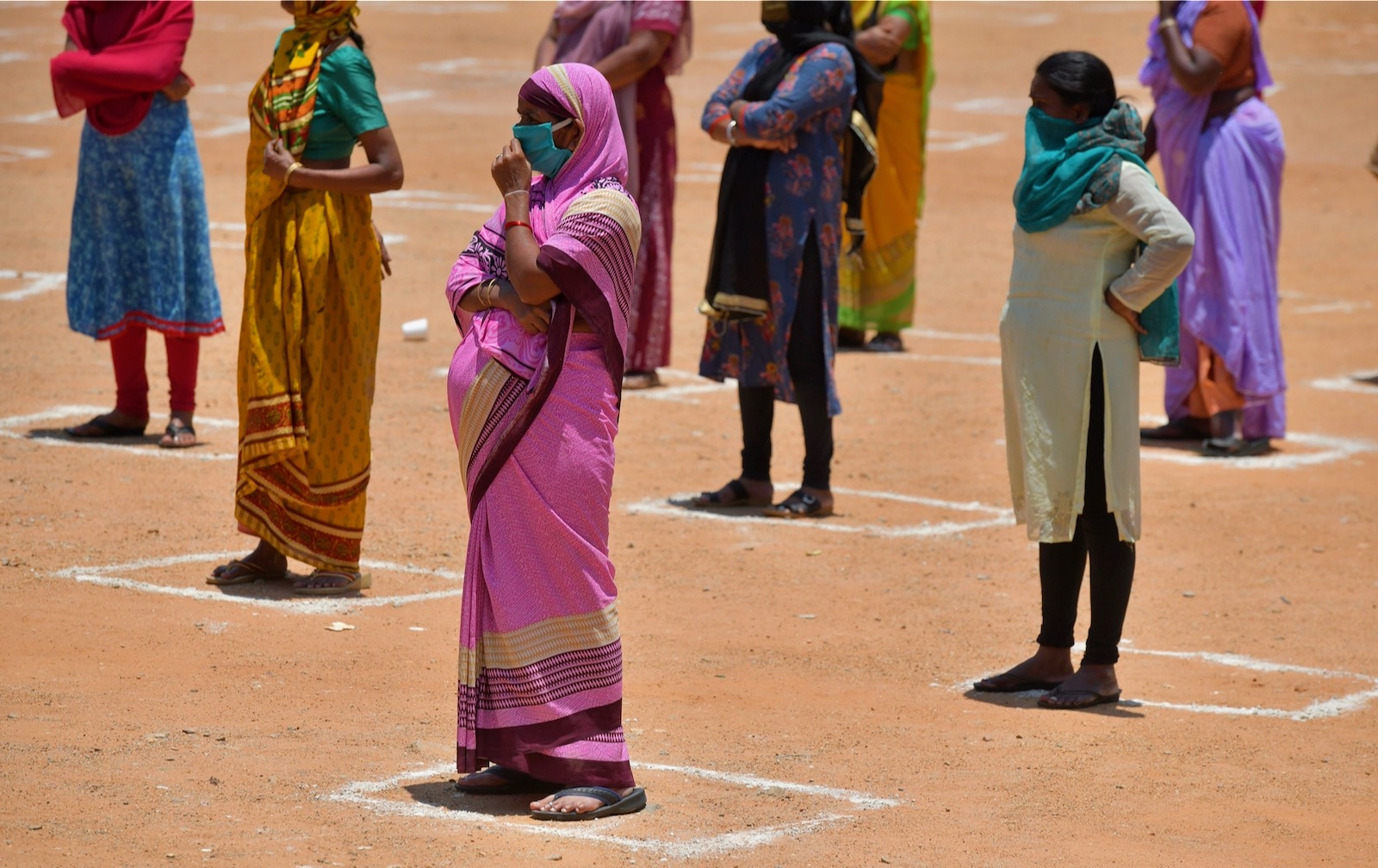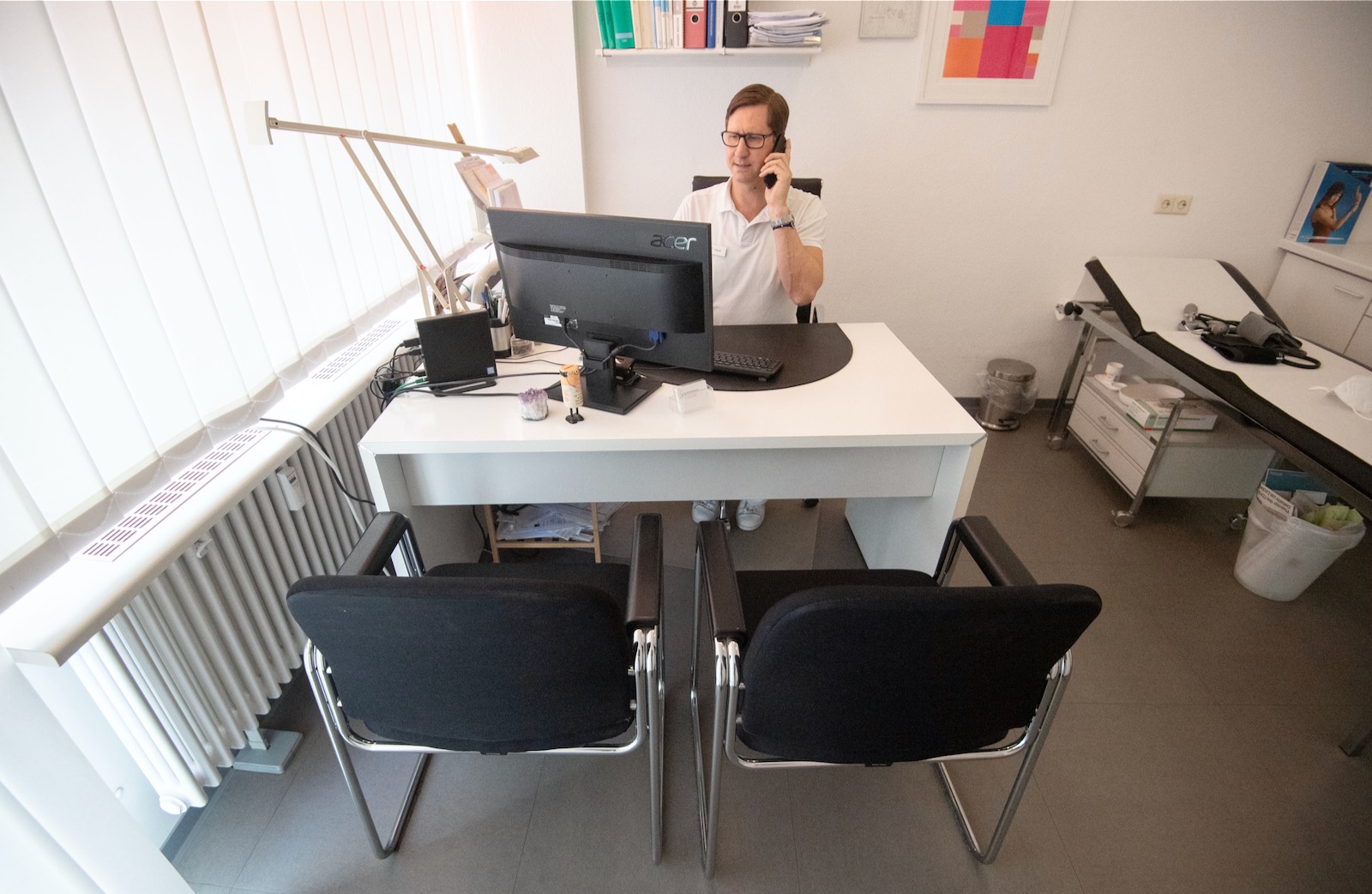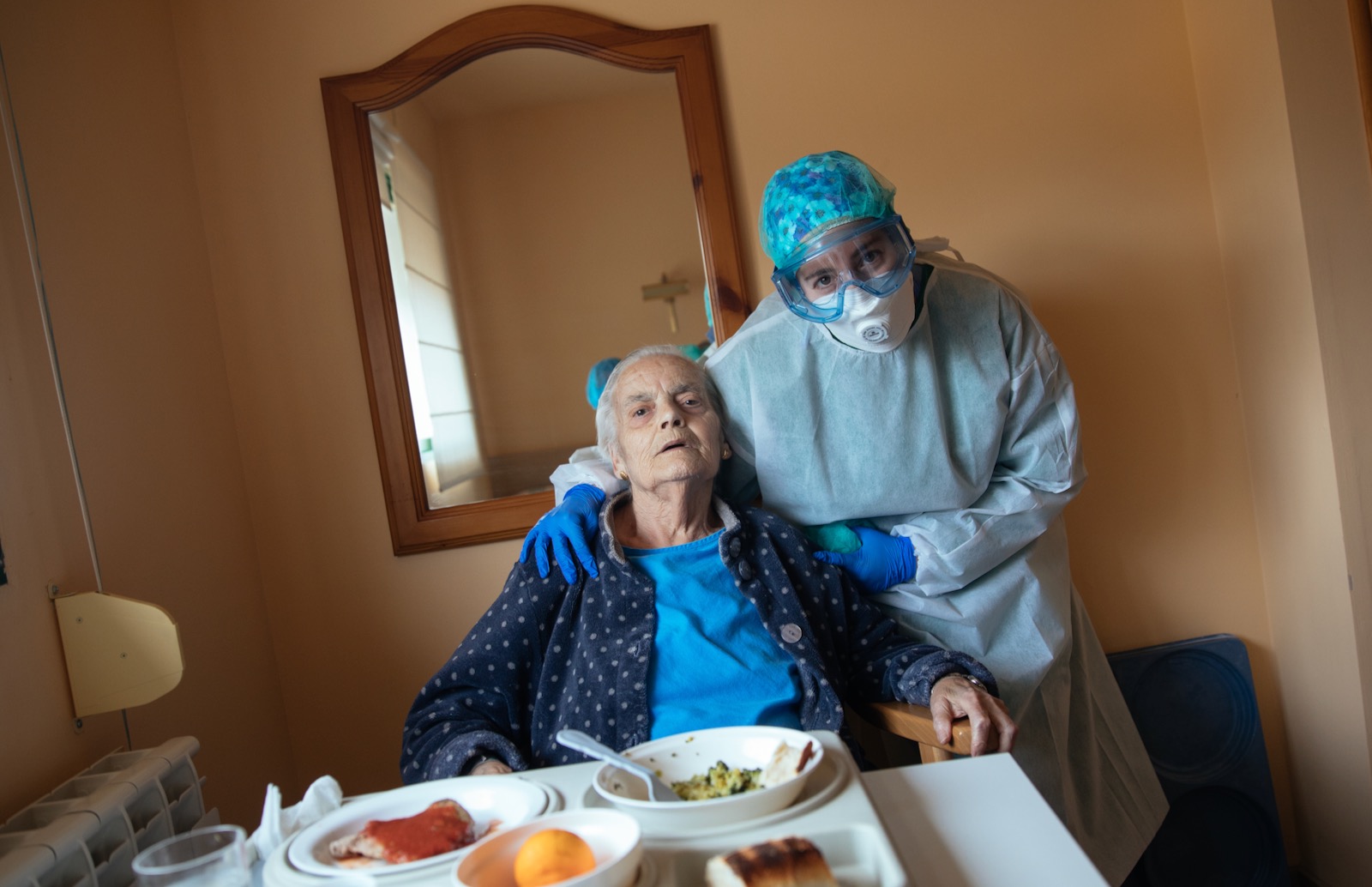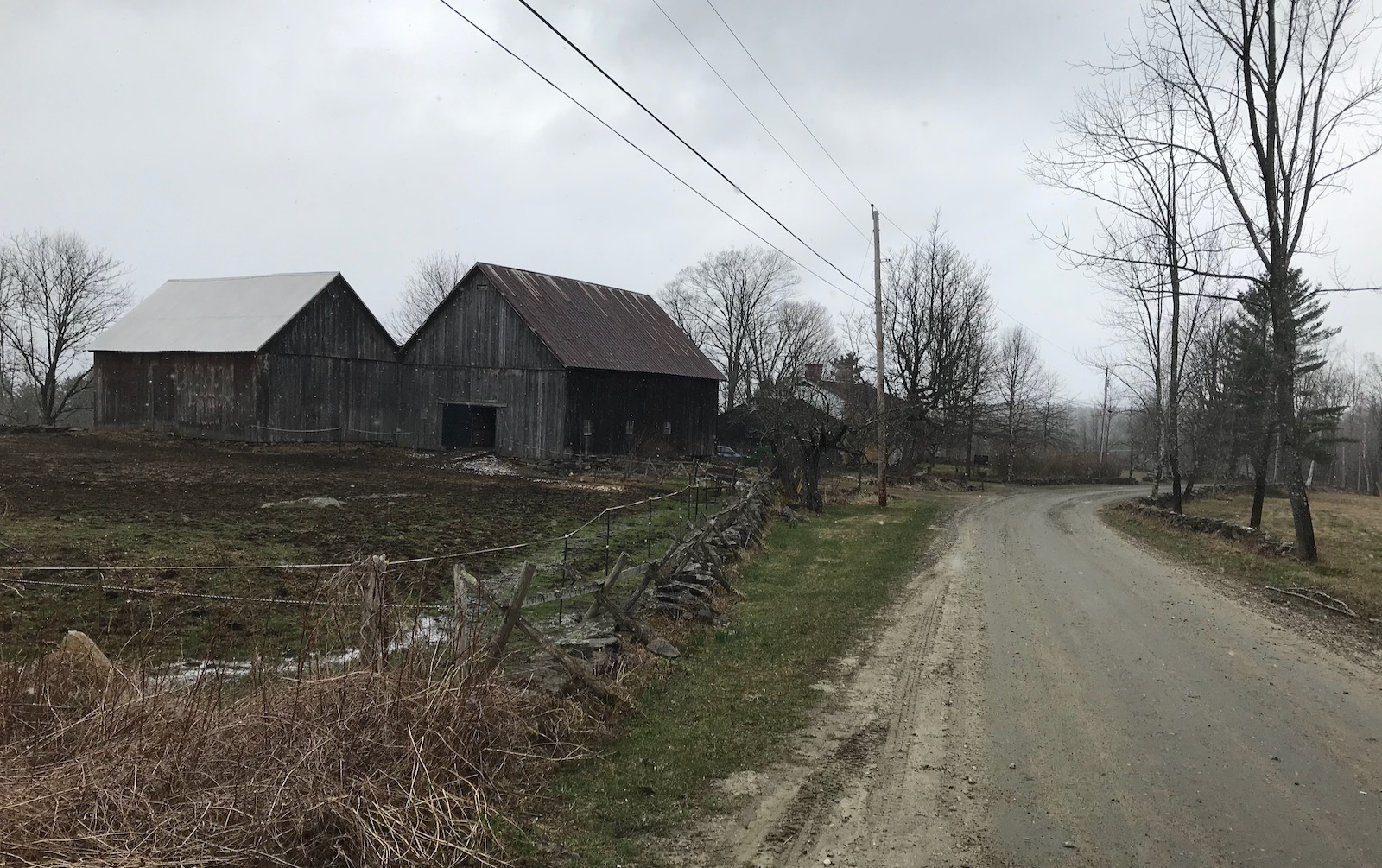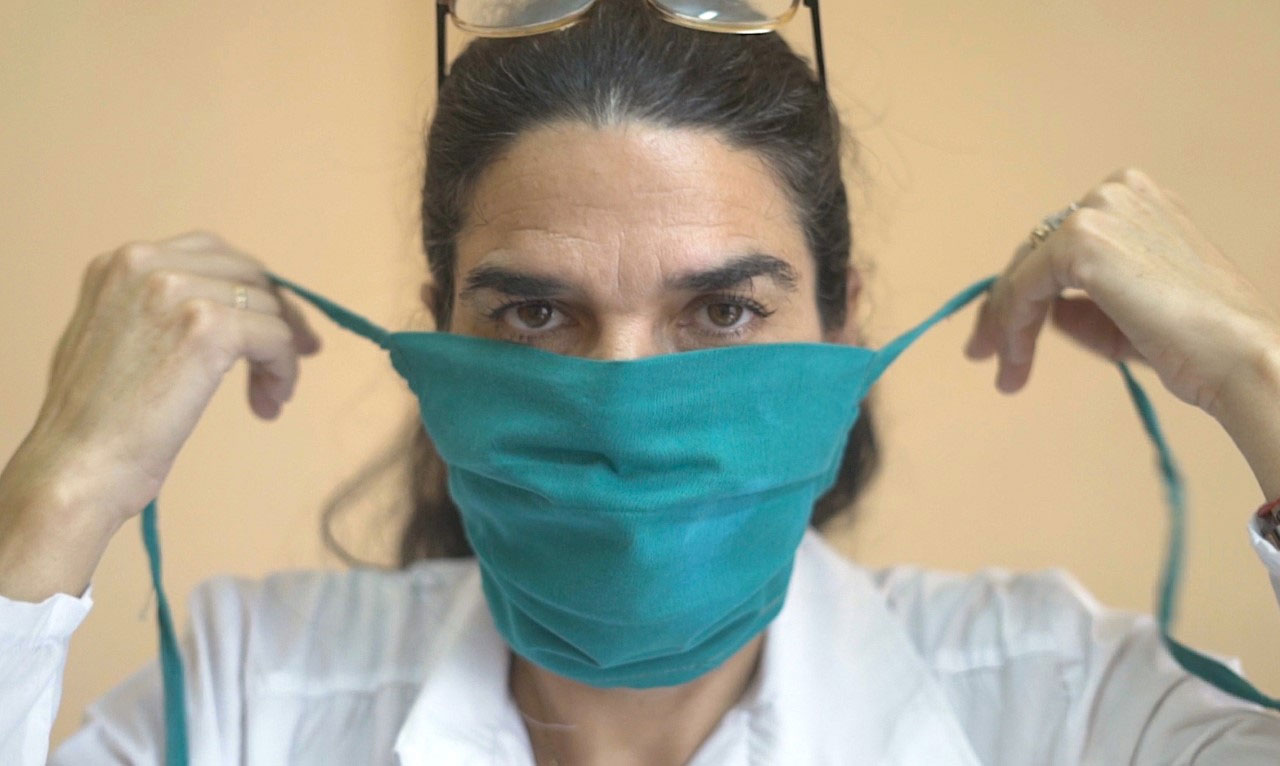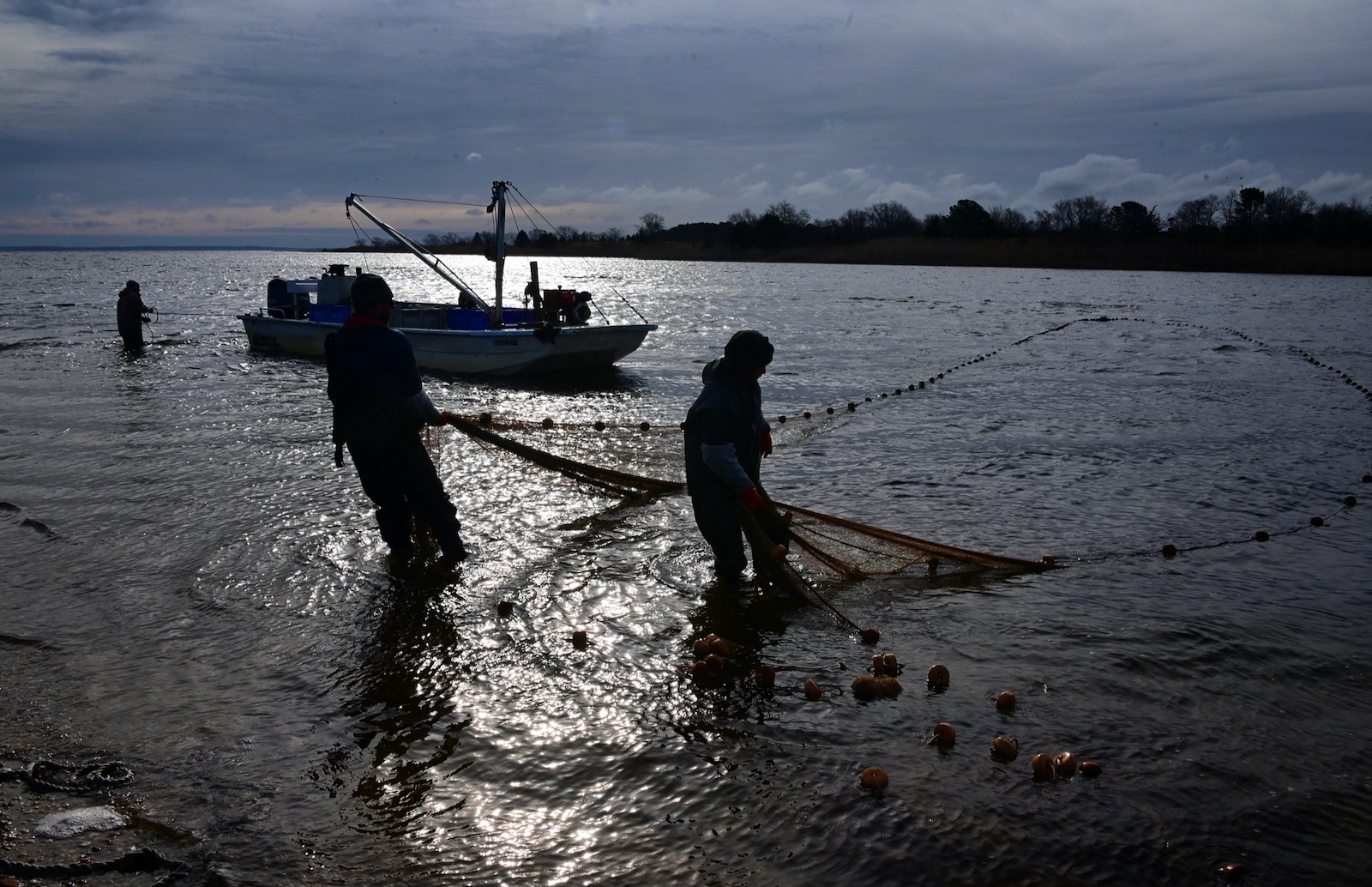This is the current edition in a running series of dispatches by New York Review writers that is documenting the coronavirus outbreak with updates from around the world that began March 17–22 and has continued through March 23–29, March 30–April 5, and April 6–12.
—The Editors
Dan Chiasson in Wellesley • Joshua Jelly-Schapiro on Fire Island • Miranda Popkey in Watertown • Reed Lindsay in Havana • Jonathan Mingle in Lincoln • Carina del Valle Schorske in Manhattan • Nellie Hermann in Wellfleet • Stuart Lewis in Brooklyn • Jeet Thayil in Bangalore • Amanda Fortini in Livingston • Gavin Francis in Edinburgh • Sara Nović in Philadelphia • Lucas Adams in Brooklyn • Coco Fusco in Brooklyn
Coco Fusco
May 15, 2020
In the midst of a pandemic that has crippled health care systems in the developed world, Cuba has projected an image of international solidarity by dispatching its medical missions to countries that have been hit hard by the coronavirus. While these medical services are welcome, they also serve a symbolic purpose by tacitly endorsing socialized medicine. The positive press reports about the medical missions deflect attention from the less savory measures that Cuba has adopted to control the crisis at home. For Cuban authorities, any struggle against an outside force—be it an insurgency, capitalist cultural influence, or an infectious disease—inevitably becomes a symbolic battle against internal enemies. The spread of Covid-19 has given Cuban State Security a pretext for escalating its attacks on its domestic critics.
Just as fifty-two doctors and nurses landed in Italy brandishing Cuban flags and a portrait of Fidel Castro, 28,000 medical students were ordered to canvass homes throughout the island in search of possible cases of coronavirus. Any Cuban exhibiting symptoms was quarantined, and thousands of foreigners were sequestered in hotels. Brigades of college students released from classes have been deployed to isolation centers to tend to those stricken by the virus even though they lack medical training.
This energetic response from the Ministry of Public Health (MINSAP) has been matched by equally zealous measures carried out by Cuban State Security and police. In recent weeks, more than five hundred Cubans have been tried and sanctioned for violations related to the pandemic. A hefty fine of 3,000 pesos ($120, the equivalent of three months’ salary in Cuba) has been imposed for social media posts the government doesn’t like. The Cuban authorities have resorted to their old tactic of treating critics as pests that infect the body politic: in the 1960s those opponents were called “worms,” and during the 1980 Mariel crisis they were called “scum.” According to current official rhetoric, they are “intruders” who must be suppressed to ensure that Cuban society remains free of anything that might catalyze a rebellion.
The law that facilitates the crackdown on independent journalism existed before the arrival of Covid-19. Decree 370, otherwise known as the Ley Azote (Gag Law), went into effect in 2019. It largely governs the development of the Internet on the island, but its Article 68 prohibits the use of the Internet “to disseminate facts and information that is considered to be contrary to the social interest, to morality, good manners and personal integrity.” The vagueness of this interdiction enables the authorities to criminalize all kinds of online opinion, just as the term “social dangerousness” in the Cuban penal code functions as a catchall for punishing displays of dissent in public spaces.
The Cuban Communist Party daily newspaper Granma ran a story on April 8, 2020, reminding its readers of the country’s penal code that anyone that “propagates false news or malicious predictions that could cause alarm, popular discontent or public disorder” may receive a four-year prison sentence. In some cases, the relationship between the infraction and its punishment is logical even if the penalty might seem harsh, such as the recent sentencing of a Cuban in the town of Guantánamo to one year in prison for not wearing a mask. However, the article links protecting Cubans from the virus with defending them against those circulating opinions that have not been approved by state entities. At least twenty independent journalists, a popular YouTube personality, numerous activists, as well as ordinary citizens, have been detained for days, interrogated, and fined in the past three months.
Seven journalists have had their cell phones confiscated in addition to being fined. Those who’ve been detained and interrogated had expressed concerns online about such matters as a coronavirus outbreak at a nursing home in Santa Clara, ubiquitous food lines in which no one practices social distancing, doubts about the official figures announced by MINSAP, dubious remedies recommended at Cuban pharmacies, and the state’s secrecy regarding the number of ventilators available on the island. They also complain vehemently about being called in for interrogations, especially when they are supposed to be practicing social distancing. They’ve aired their views of their country’s management of the pandemic in the only space in which Cubans who are not government officials or PCC members have a voice—social media. As an increasing number of Cubans take to Facebook to complain about state repression and their government’s shortcomings, the authorities have grown more anxious about the platform’s disruptive power.
Advertisement
One of the journalists who has been admonished for taking pictures from her apartment window, and who was interrogated in April and fined for allegedly violating Decree 370, is Mónica Baró Sanchez. She happens to be the island’s most celebrated independent journalist, and last year she won the Gabo Foundation Award, which is granted by the Colombia-based Gabriel García Márquez New Journalism Foundation, for her trenchant essay about the origins and consequences of lead poisoning over a sixty-year period in a poor Havana neighborhood. Her investigation dealt a mighty blow to the pristine image of the state’s public health system. Her recent interrogators showed her a folder of her Facebook posts.
“They told me that if I had been called in it was because I was violating laws,” Baró Sanchez recalled to me in a Whatsapp exchange we had last month. “My answer to them was that if I was there it was because they were violating my rights, rights that are inalienable and universal. The right to a free press and free speech. Laws cannot prevail over human rights.”
She explained that while the pandemic might serve as a pretext for intensified policing, their interrogation sought to intimidate her into admitting wrongdoing. The agents expressed their disappointment that she was not like more her family, whom they understood to be “integrated,” the Cuban buzzword for those who are loyal to the system. They zeroed in on the funding sources for the publications she works for, insinuating that she was a tool of foreign interests. El Estornudo, the magazine in which Baró Sanchez currently publishes, is supported by the Open Society Foundations and the National Endowment for Democracy. “I characterized Open Society as a nonprofit organization,” she told me, “but they kept insisting that it was a subversive organization that was trying to bring down the revolution.”
Baró Sanchez has publicly declared that she refused to sign the receipt acknowledging the fine, and that she also refuses to pay it, preferring instead to appeal the Ministry of Communications’s decision to impose it. Baró Sanchez says her interrogators warned her that after thirty days, the fine would double, then triple, and that failure to comply could result in jail time. Fortunately, she is not the only Cuban to be resisting Decree 370. While the authorities continue to try to purge the Internet of dissenting voices, island-based critics of the law multiply daily, posting anti-Decree 370 graphics, petitions, commentaries, and academic analyses of the law’s logical fallacies. Since Cubans gained Internet access on their phones in 2018, social media has become their most vital and vibrant public forum. It may prove to be the only invasive force that the Cuban state will not be able to thwart. ■
Lucas Adams
May 7, 2020
BROOKLYN, NEW YORK—I live in an apartment that is somewhere between Greenpoint and the East Williamsburg Industrial Park. It’s mostly warehouses and the BQE, far from the things most associated with life in New York. The news coming out of the city can feel dire and overwhelming, but when I stay off the Internet, life still floods in. These are some of the moments that have kept me connected, and given me some hope.
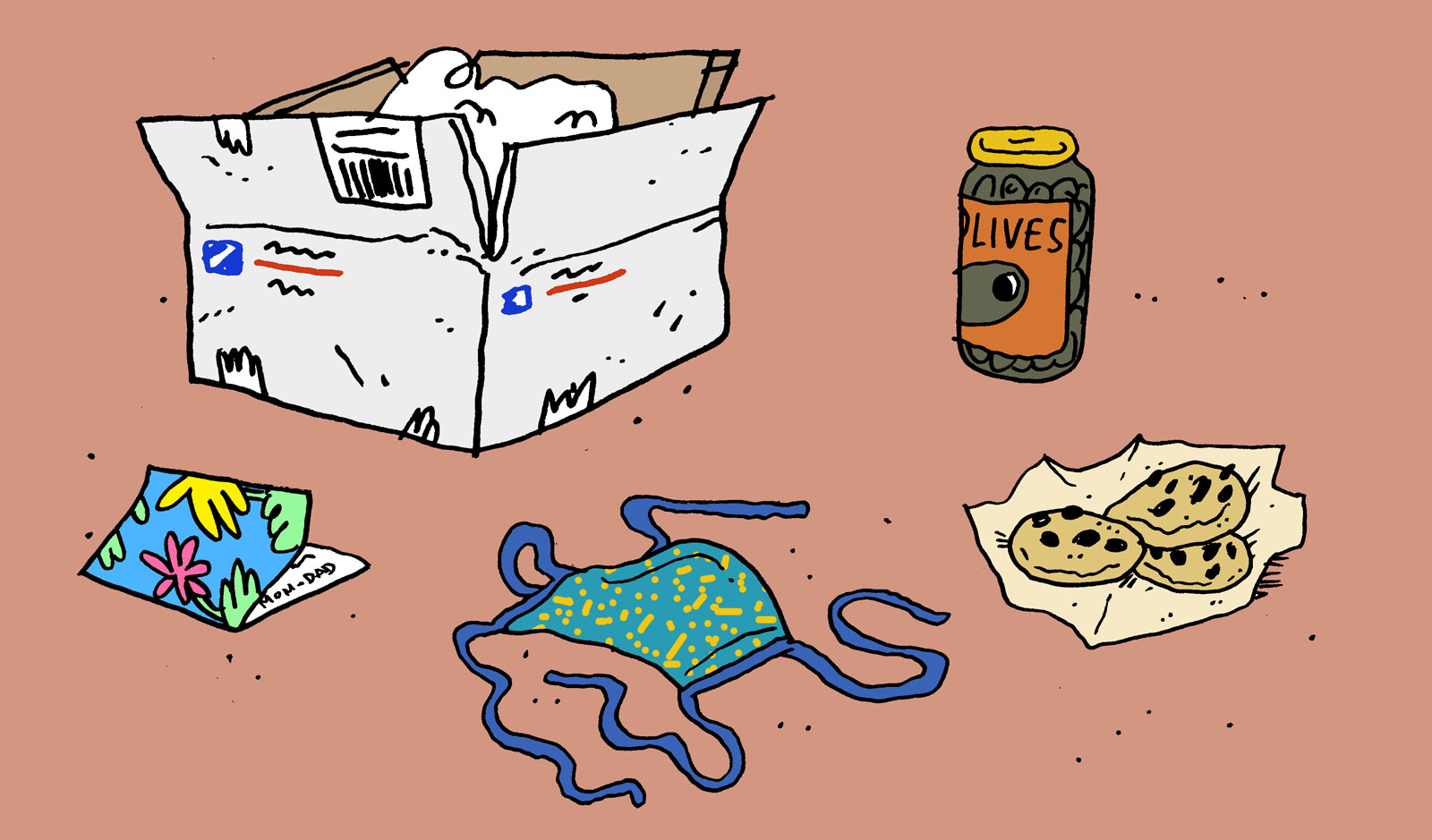
PACKAGES: I was supposed to visit my family in California in April. Instead, my parents send me USPS boxes full of home-baked cookies, jars of olives, homemade masks. They’ve always sent packages, but these ones feel as though they’re from farther away, loaded with more intent, somehow suggesting a disassembled family vacation packed in a box.
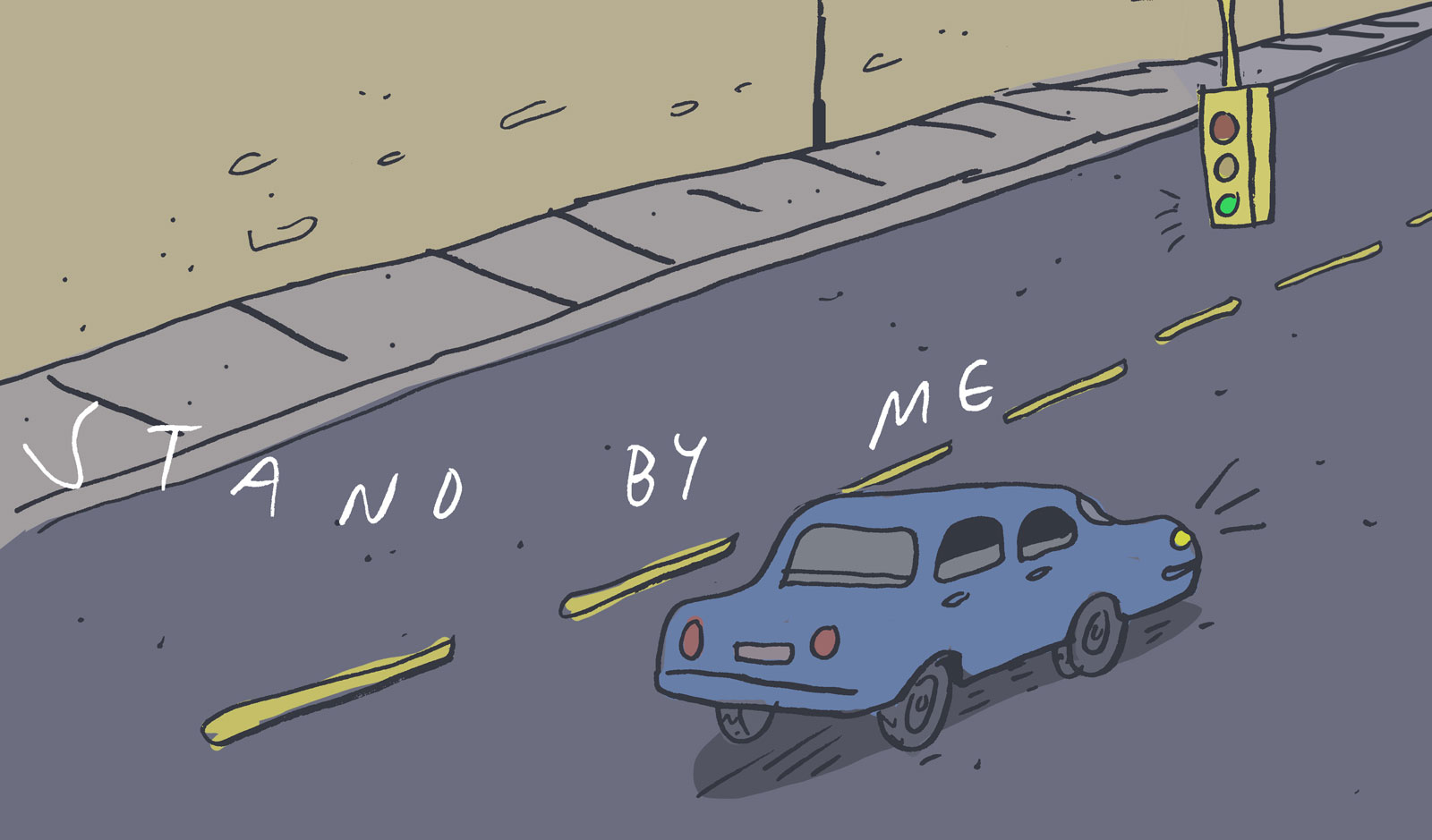
“STAND BY ME“: While I was walking home with a pizza, around 7 PM on a foggy, cold Sunday, a man drove slowly past on Kingsland Avenue, all his windows down, blasting “Stand By Me” by Ben E. King. I started cheering and pumping my fist, and then crying. It felt like a small but deeply generous gift from one individual to his neighbors, to his city.
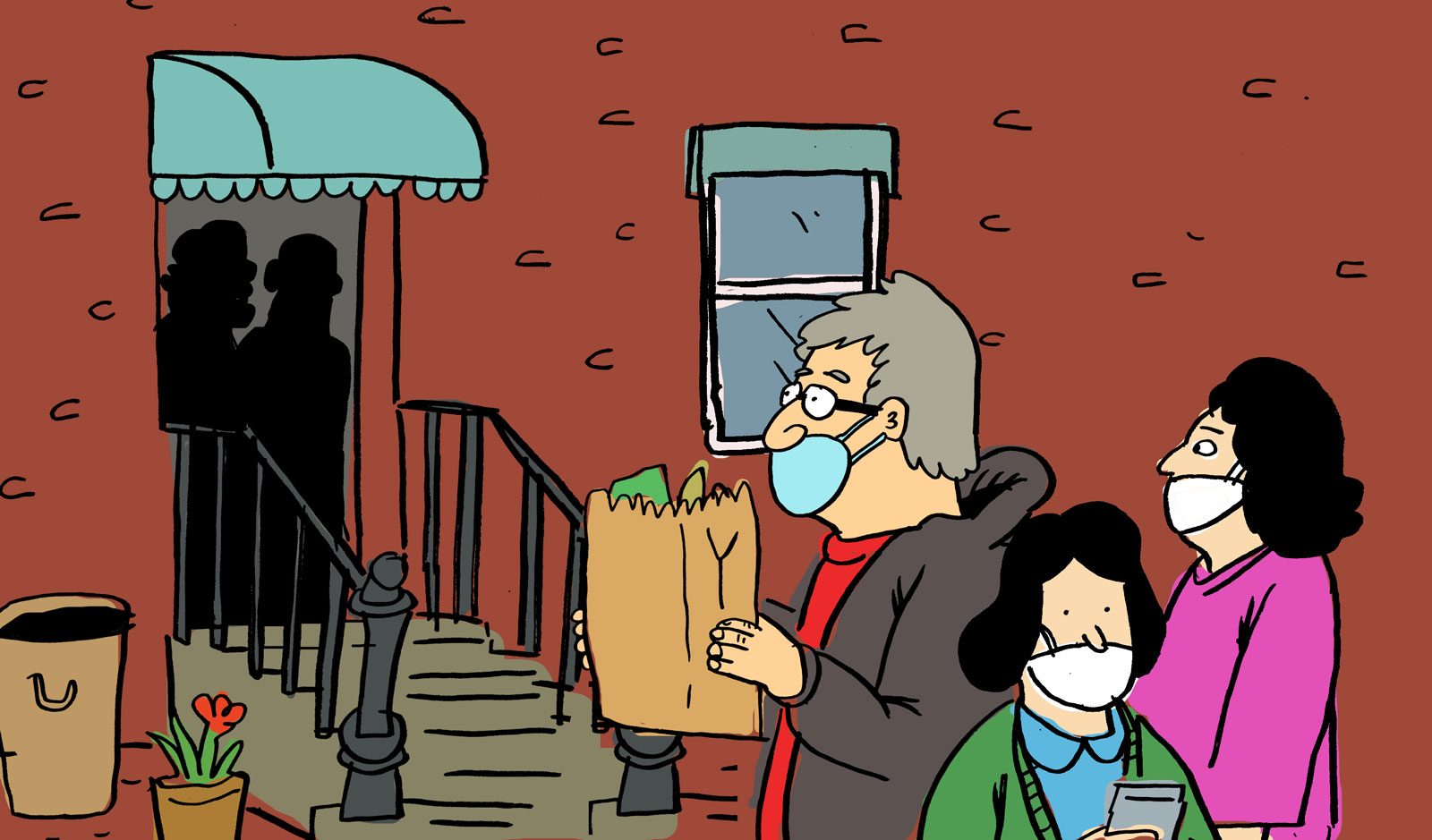
A NEIGHBOR’S VISITORS: Outside of my bedroom window, across the street, an older couple get a weekly visit from their son and his two daughters. The routine is always the same: everyone wears masks as they exchange goods as if at a border crossing, putting gifts and food down on the middle step of the stoop and disinfecting them before the visit really begins. Watching through my window, it’s been my most regular opportunity to enjoy the company of strangers.
Advertisement
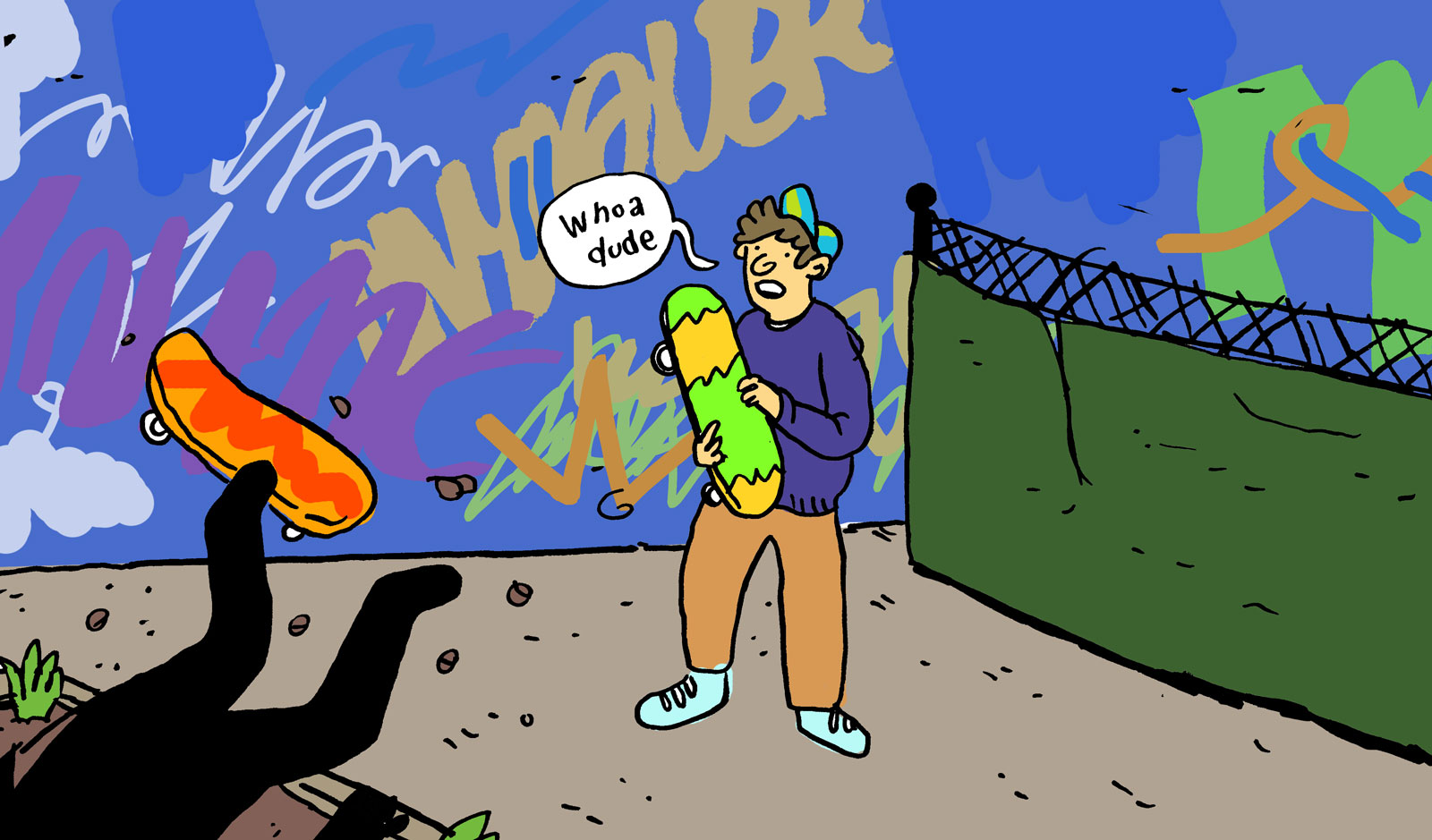
SKATEBOARDERS: There are three very good skate spots near my house, and the teens haven’t been fazed by any of the stay-at-home orders: they keep skating, keep seeking each other out, rarely wearing masks—teens are generally rule-breakers. But I feel an unexpected mix of jealousy and frustration watching these skaters, wishing I could be with my friends, too.
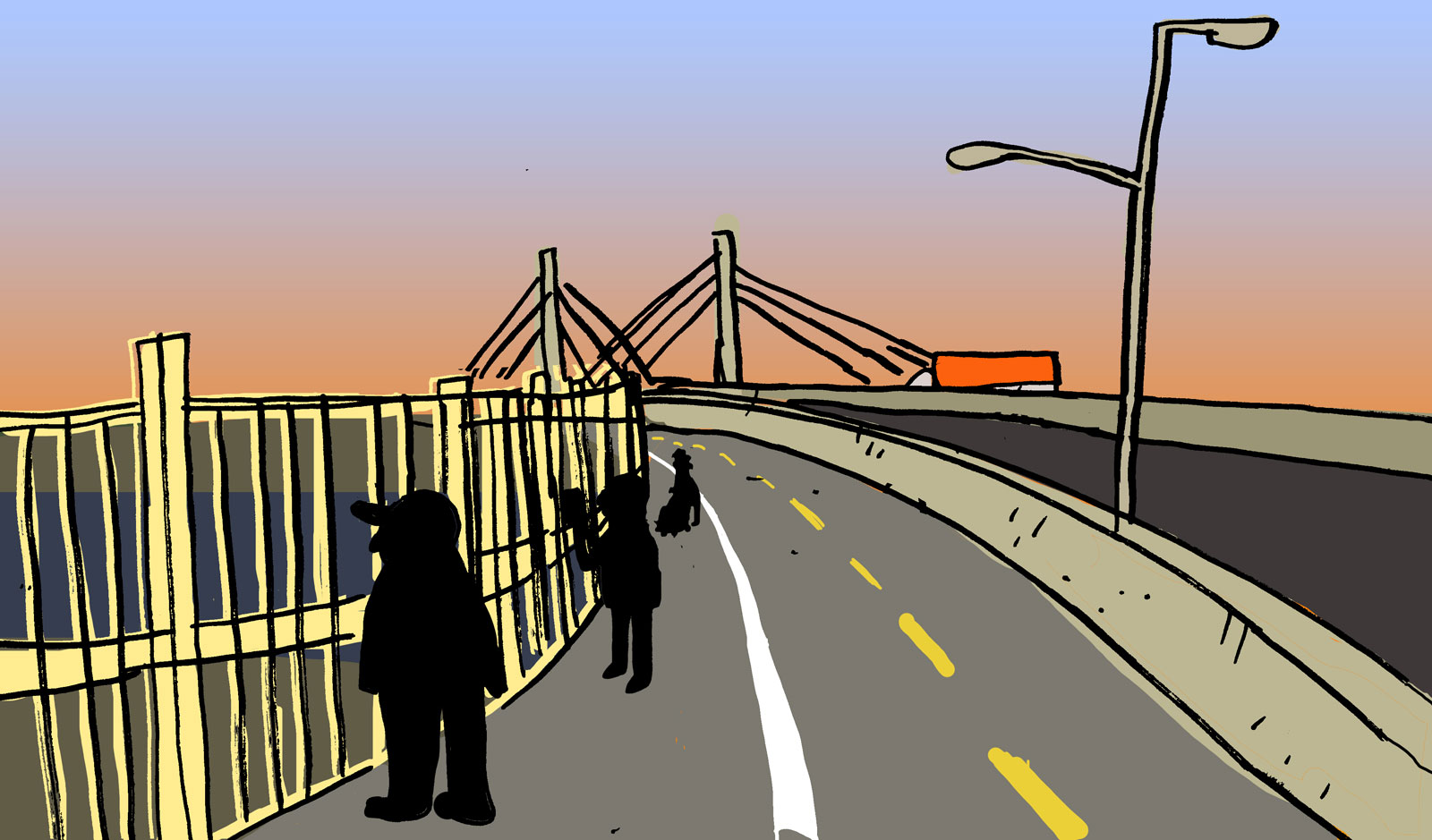
KOSCIUSZKO BRIDGE AT SUNSET: Though it is perhaps the least scenic of any bridge in NYC—its span rising from scrap yards on the Brooklyn side, reaching over the Newtown Creek Superfund site, and dipping to the Calvary Cemetery in Queens—crossing Kosciuszko (named for the Polish-Lithuanian Revolutionary War hero) has become the daily ritual I most look forward to: I get to curse under my breath when I pass slower pedestrians, admire cute families all wearing masks, and experience that do-I-know-that-guy feeling so absent from much of quarantine. Plus, Manhattan’s skyline takes on a cinematic silhouette at sunset, everything backlit golden. My walk back feels like home. ■
Sara Nović
May 4, 2020
PHILADELPHIA, PENNSYLVANIA—In the summer of 2019, after I gave birth to my son, I flunked the postpartum depression screener. A multiple-choice questionnaire, all new mothers were required to fill it out before leaving the hospital: In the past seven days, have you felt scared? Panicky? Had difficulty sleeping?
I was a first-time mom past her due date. In Philadelphia, it was 111º F. Yes, yes, and yes.
Five months later, in January, I sat on the couch holding my son and tried to convince myself I was just being paranoid. Coronavirus had leveled China’s Hubei Province, had even landed in the US, but Washington state was far away. Maybe, I thought, they’d be able to contain it.
I texted my friend, a respiratory therapist, hoping she’d talk me down. “I don’t think you’re being paranoid,” she said. “You’re right to be concerned.” When, not if, it gets to the East Coast, she said, she would stop going out in public and find a way to avoid taking the bus to work. This was not what I wanted to hear.
Was it the pediatric nurse who coughed violently through the administration of my son’s flu shot? My student, who’d been relegated to quarantine after a roommate returned from Seattle with odd, flu-like symptoms?
It started as a tickle in my throat, then a warm, uncomfortable pressure spreading through my chest. Allergies, I thought, but I wasn’t congested. Then the cough—forceful but disconcertingly dry. I was feverish, my face tingled.
Mother to an infant, I was no stranger to tired, but this was a fatigue I couldn’t fend off. For the first time, I actually napped when the baby napped. I taught my writing course online and afterward felt as if I had been bludgeoned. In the past seven days, have you felt as if things are getting on top of you?
I’d grown up with asthma and knew the feeling of constriction. But this was different—it was not a tightness in the bronchial tubes but in the lungs themselves, pain and pressure razing up my sides beneath my ribs. My inhaler didn’t help. I’d come up short of breath reading a storybook to the baby.
This was the second week of March. On Monday, when I called the doctor, they were still asking whether I had been to Wuhan. Four days later, Philadelphia had announced its school closures and the doctor sent me to urgent care for a chest X-ray.
The medical staff ushered me into a mask, tested me for the flu, and closed me in an exam room for an hour. The mask made it harder to breathe and I worried I would pass out. They gave me an X-ray, swabbed me for Covid-19 and a panel of other respiratory diseases. They handed me a note to excuse me from work and told me to self-isolate, then sent me out the back door.
Over the next ten days, I’d feel better, then worse again. I’d breathe easily then feel woozy and have to lie on the floor. I considered going to the hospital, but didn’t want to leave the baby. Difficulty sleeping? In the middle of one night, awake and struggling to breathe, I wrote an emergency will.
Finally, when my fever had broken and I could walk around the house without running out of air, my husband’s boss called to lay him off. My husband pleaded that they allow him to work unpaid if he could just keep his health benefits. She was sorry, his boss said, but the position had been eliminated. Have you been so unhappy that you have been crying?
My test results returned fifteen days later. I was negative for the flu and the other respiratory infections. My Covid-19 results read, “CANCELED—deterioration occurred during specimen handling.” The doctor called and apologized, said it was not the first time the lab had botched the test. Given my symptoms, she thought I’d had the virus. Maybe, when one was available, I could get an antibody test.
Maybe, I thought, studying my husband warily for signs of illness. We discussed whether we could purchase insurance on the Obamacare marketplace, debated two plans, each more costly in monthly premiums than our mortgage payment.
Rainy days in isolation spent navigating the unemployment and IRS stimulus systems are claustrophobic, the future uncertain. But in April, our son cut his top two teeth, learned to army-crawl backward around the house and pull himself to his feet, and grins wildly whenever he hears Creedence Clearwater Revival or Lizzo. In the past seven days, have you been able to laugh? Here in quarantine, in our little row-house, our precarious world is also opening. ■
Gavin Francis
May 1, 2020
EDINBURGH, SCOTLAND—In Scotland, the spread of the virus was two or three weeks behind London as lockdown came in, and we’ve seen the benefit of that delay. Bed occupancy in Edinburgh’s ICUs peaked around April 9, is dropping now, and only briefly breached the pre-Covid-19 capacity. But the delivery of medical care is utterly transformed.
I work in primary care. As the hospitals were cleared out for Covid-19, specialist outpatient clinics for practically everything but cancer were cancelled. Many routine hospital tests are now unavailable. The labs are frantically expanding their viral testing capability and have little capacity for anything else. The private hospitals are closed to procedures and clinics: there’s no IVF, no outpatient physiotherapy, no drop-in sexual health services. The psychiatrists are as busy as ever, but on their phones. Surgeons can’t operate on anything but cancer and emergency cases because anethesiologists are all redeployed to the newly expanded critical-care facilities—previously, forty beds for a population of 850,000, now one hundred and thirteen.
The government has issued letters to everyone in the country who falls into one of six categories asking them to “shield” themselves from the virus—i.e., stay at home with extra precautions—for at least the next twelve weeks: organ transplant recipients, those on active chemotherapy, those with severe lung disease, those with certain metabolic diseases, the significantly immunosuppressed, and pregnant women with underlying heart problems. A seventh category is anyone whom we primary care physicians deem vulnerable—which has effectively doubled the length of the government list. Every individual considered high-risk is sent a code that gives priority for supermarket food deliveries, benefits, and community support.
In my own clinic, during routine office hours, I spend much of the day on the phone or with hastily rolled-out video-conferencing technology, addressing and assessing every medical problem I can without face-to-face contact. Before Covid-19, I’d manage thirty to forty patients a day; now, it’s about half that number. I bring in or visit at home just two or three patients per day, when I absolutely have to perform a physical examination to rule out something sinister.
I’ve spent twenty years working toward a model of health care in which optimizing the medical encounter was all about body language and non-verbal communication. I loved the subtlety, variety, and intensity of practicing medicine that way; the depressing new normal means that I have to minimize exactly the kind of contact that, for me, used to give it value. People now email me photos of their rashes.
For the few in-person appointments, I put a mask over the face of anyone who might conceivably have Covid-19, and consult with them from behind a visor, apron, and wearing two pairs of gloves. Last week, I was obliged to use video-conferencing to talk someone down from a panic attack. Many of my colleagues feel the same, tired out already, though we’ve got months, and likely years, of this pandemic to run.
Panic and anxiety are the virus’s dark corollaries, a second pandemic leaching into everyone’s lives. As the weeks wear on, I speak with increasing numbers who can’t sleep, who are facing bankruptcy, who are turning to drink, whose mental health, already fragile before the pandemic, is now in freefall.
One woman whose mood swings I’ve helped manage over the years through face-to-face conversations, recommendations of long walks, suggestions of group activities, and distraction techniques, is now on the phone to me almost daily as we try new sedative drugs to quiet her seething mind. Another patient, who had only the most tenuous of holds on reality, seems to have drifted off into a world of his own: without the anchors of family, support workers, and occupational therapy, his paranoias are deepening and his hallucinations are more frightening. All this while long-stay mental health hospitals—institutions custom-made for viral spread—are trying to empty their patients into the community “for their own safety.” We’ve spent many years fighting for mental health to be prioritized and granted resources on a par with physical health, but this lockdown has shown how much mental health is left behind whenever death rates soar.
Like everyone else, we’re figuring out how to ease restrictions safely. The death figures for England and Wales between April 3 and 10 showed 8,500 more deaths than the same period last year. Only about 6,000 of those were formally ascribed to Covid-19, the rest presumably among people for whom the virus has damaged their access to health care, either through a diminution of services or because they were too frightened of the virus to go to the hospital when they should have. The disease poses a double tragedy: unchecked, it would overwhelm our health system. But suppressing it will have grim and enduring consequences. ■
Amanda Fortini
April 29, 2020
LIVINGSTON, MONTANA—Spring has finally arrived in late April, and after a nearly monthlong shelter-in-place order, Governor Steve Bullock announced last Wednesday that Montana has “seen the number of positive [coronavirus] cases decline over these past weeks.” Along with a handful of other states, including Colorado, Minnesota, Georgia, and Tennessee, Montana has now begun a “phased reopening,” which commenced on Sunday, April 26, with churches. As of this Monday, retail businesses can open if they operate at “reduced capacity” to ensure “physical distancing”—a mandate that is not as difficult to achieve here as it is in other places, in this state with an abundance of land and only a million people. And so we are steadying ourselves to reemerge. Yet testing for the virus remains confusing and decentralized, and the overall plan is unclear.
My husband and I drove back to our small town on the Yellowstone River in the middle of March. We had been in Las Vegas, where I was on a fellowship and doing some reporting for a book, when his two kids were sent home from college. My stepdaughter was given four days to leave campus and ship her belongings home from Boston; my stepson was told not to return after spring break: his clothes, books, and iPad are still in his dorm room in Philadelphia. The first weeks here were like quarantine anywhere, full of stocking up, cooking, dishwashing, and nonstop Internet doom-scrolling. We spent our early mornings watching birds squabble on the rooftop of the closed restaurant-bar across the street, and our late afternoons hiking in the mountains behind an empty fishing access, or walking on a dirt road where the only person we saw was a rancher moving cattle.
By early April, our town had settled into a strange limbo. Montana has had 451 coronavirus cases and sixteen deaths. Park County, where I live, has had only seven documented cases, all of them recovered. In contrast, the neighboring county, Gallatin, has had 146 cases, the most in state. Gallatin is home to Montana State University in Bozeman, an international airport, and the posh Yellowstone Club in Big Sky, where Justin Timberlake and Google’s Eric Schmidt own houses. The county’s residents are generally well-off and mobile, and many out-of-towners converged there, bringing the virus with them, as the pandemic took off.
Our Democratic governor shut down schools on March 15, the same day as New York City, and people have been surprisingly, almost enthusiastically, compliant with the shelter-in-place order. A group of local women sewed nearly a thousand masks for hospital workers. Homemade banners that say “Heroes Work Here” hang at the grocery store and not far from the hospital’s emergency room entrance. “Some would argue, but we are not deemed essential, so we have decided to close,” read a handwritten sign on a local thrift store. Did we flatten the curve or did the curve never arrive here? It’s hard to say.
While our case count remains low, what has become frighteningly urgent are the economic consequences of lockdown. People all over the country are hurting—in most places, the $1,200 stimulus check barely covers rent—but the effects will be especially pernicious here. Even before this crisis, roughly 15 percent of the state’s population lived below the poverty line (the national average is 12 percent). There are no Fortune 500 companies in Montana—our economy is not buoyed by big-name employers. Livingston, a gateway town to Yellowstone National Park, is populated by artists and writers and ranchers and fishing guides—most of the people I know are self-employed. The coffee shops, restaurants, art galleries, gift shops, and home goods stores that make up our quaint downtown have been shuttered for weeks. These small businesses depend on tourism from travelers who come to fly fish, attend the rodeo, or visit Yellowstone, especially in the summer months. But the park remains closed until further notice, and management has already said that it will only hire half its seasonal staff of about four thousand employees.
Other local employers are limping, too. PrintingForLess, a commercial printing company, just laid off sixty-seven people, half of them in Livingston. Every day, local newspapers announce the struggles of area hospitals, which shut down nonessential care and geared up for a surge that never happened: “In preparing for the coronavirus, Montana hospital revenue plunges,” read a paradoxical recent Bozeman Chronicle headline. Our own small rural hospital’s revenue has dropped by half, and employees are being asked to take voluntary unpaid time off. Losing our hospital would be dire. For many people, though, things already are: 81,000 Montanans have filed for unemployment—nearly a tenth of the state’s population.
As grim as all this is, people are emerging from their cocoons. Our county has not had any new cases since April 6. The trail heads are busy with hikers, no one too close—people appear to be hanging in their quarantine clusters—and the slow drip of commerce is returning. At the drive-in burger stand, which opened for the season this weekend, dozens waited in line: maybe three feet apart, definitely not six, but also visibly self-conscious about getting too near one another. Midday on Sunday, the drive-thru line at Dairy Queen was twelve cars deep. “In difficult times, ice cream makes everything better,” read the electronic marquee. Bars, restaurants, and casinos are cleared to reopen at the beginning of next week. Schools can choose to follow suit a few days later, but a teacher friend tells me she doesn’t think they will.
On a walk around town, I pass a tattoo parlor and see, through the window, a masked woman having her foot tattooed by the artist who owns the shop; her face is also covered. I hope the numbers hold. ■
Jeet Thayil
April 24, 2020
BANGALORE, INDIA—Here, in the world’s most congested city, there is a midnight quiet at all times of day. On the streets, where the occasional two-wheeler or pedestrian can be seen, there are no trucks or public transport. Police checkpoints have been set up along the main arteries. Cars are confiscated if drivers take them out for no good reason. Some hospitals are open, and groceries, and ATMs. Everything else is shut; and each time the lockdown reaches its endpoint, it is extended.
In India, the pandemic came as a bounty to the ruling BJP party: taking advantage of the chaos the virus brought, the Indian government consolidated powers it would have been impossible to imagine even half a dozen years ago. It has enacted measures that played on the idea that Muslims were knowingly spreading the virus, resulting in the further persecution of India’s 200 million Muslims, as well as its Dalit minorities. It has used the police and the army to enforce the nationwide lockdown. It has penalized political dissent, using archaic laws against sedition to arrest its critics.
Indians as a rule take pride in being part of an experiment routinely described as “the world’s largest democracy.” When that description has been tested, for instance during Indira Gandhi’s Emergency, journalists took it upon themselves to resist. Some went to prison. Others used blank, black-bordered editorials in the national newspapers to register their protest. In Prime Minister Narendra Modi’s India, the independent press has all but vanished. Journalists go out of their way to praise the party line; those who do not are dealt with summarily.
Violence against journalists, intellectuals, and opposition figures has been part of the strategy against the party’s critics for some years now. Earlier, shadowy assassins carried out right-wing vendettas against a number of writers and activists: Gauri Lankesh, Narendra Dabholkar, Govind Pansare, and M.M. Kalburgi. Of late, the full machinery of the state has been brought into play, as if the government no longer needed to disguise its intent.
On April 10, in the midst of the lockdown, a black police SUV drove 400 miles from Uttar Pradesh to Delhi to deliver a legal notice against Siddharth Varadarajan, the editor of the independent news portal The Wire. His crime: The Wire had published an article related to a meeting in Delhi’s Nizamuddin neighborhood of the Tablighi Jamaat, a group of Islamic missionaries similar to the Jehovah’s Witnesses.
The government had condemned the meeting as a “super-spreader” of the virus, immediately followed by a wave of fake news and propaganda disseminated by text messaging. The spread of the disease was deliberate, the messages said, a way for Muslims to destabilize the country and kill Hindus. In response, The Wire said “Indian believers” had also been late to adopt social distancing practices, citing a religious fair planned for the holy city of Ayodhya by Uttar Pradesh’s chief minister, Ajay Bisht, a saffron-robed autocrat who calls himself Yogi Adityanath. In retaliation, Bisht’s BJP government registered a complaint against Varadarajan with the police.
Four days later, while the rest of the country was distracted by the rising rates of infection and death, Indian authorities invoked the Unlawful Activities (Prevention) Act to arrest two human rights activists, Anand Teltumbde and Gautam Navlakha. The men are currently in jail, at a time when convicted criminals are being released to ease India’s notoriously overcrowded prison system threatened by the virus. In an open letter, Teltumbde, a Dalit intellectual and activist, wrote:
As I see my India being ruined, it is with a feeble hope that I write to you at such a grim moment… I earnestly hope that you will speak out before your turn comes.
That little-known statute permits the government to detain individuals by branding them as “terrorists.” On Saturday, it was used to charge a twenty-six-year-old Kashmiri photojournalist named Masrat Zahra with “uploading anti-national posts [on Facebook] with criminal intentions to induce the youth” and “causing disaffection against the country.” Zahra, a freelancer whose subjects are women and children, has been joined in recent days by a host of others booked under the same act: the student leader Umar Khalid, student activists Safoora Zargar and Meeran Haidar, the journalists Gowhar Geelani and Peerzada Ashiq. All of them happen to be Muslim—where does coincidence end and religious persecution begin?
Since the arrival of the virus in India, the prime minister has addressed the nation twice. On both televised occasions, he asked citizens to enact an odd set of rituals at specified times of day, as a way of defeating the virus. Recommended were community activities such as the blowing of conch shells, the lighting of diyas (lamps), and the beating of thalis (platters), each of these customs and rites acting as a dog-whistle to upper-caste Hindus intended to isolate the nation’s beleaguered minorities. Soon enough, neighborhoods in Delhi posted notices saying Muslims visitors were unwelcome, vegetable vendors were asked for proof of their religious affiliation, and, elsewhere in the country, hospitals denied care to Muslim patients.
In a little less than a month, we learned that the virus is not the leveler we thought it was. If this is a war, it is, in fact, a class war. The upper-caste and upper-class residents of seafront Worli, in Bombay, are faring better than those who neighbors their high-rises, the residents of slums where entire families share a room and social distancing is not an option.
For the new populists, and the corporations that fund them, the only rule is to keep the wheels of industry turning: those low-paid workers—hospital staff, grocery and pharmacy store workers, security personnel, municipal employees, food delivery contractors—have become the front line of the pandemic, because they are easily replaceable and fundamentally disposable.
In the days following the lockdown, hundreds of thousands of casual workers in Indian cities found they were suddenly without money, or even the hope of earning money. They set off on foot for their hometowns in rural areas and distant provinces, walking for days, entire families carrying children on their backs, their belongings stuffed into cloth sacks carried on their heads. Many of them, particularly the elderly, died along the way. The choice was stark and non-negotiable: stay in the city and die of hunger or take to the road and hope for the best.
In a last twist, if and when they managed to reach their homes, they found they were unwelcome, ostracized as possible carriers of the virus. In one haunting image from those days, a family took shelter in a tree, squatting on its branches like migratory birds, staring at the camera, in their eyes not defeat but defiance.
This is the price paid by the poor of the world to those who wield the power and the prestige. It is the same everywhere. The algebra of need and exploitation will not change from one society to the next.
In India, as in the rest of the world, the pandemic is teaching us to be vigilant against the old men whose greed for money and power is wielded at the expense of the people they have been entrusted to protect. They are the new elites, the enemies of democracy, inclusion, women’s rights, science, all forms of expertise, and every kind of intellectual singularity. We must be as on our guard against them as we are against the virus. ■
Stuart Lewis
April 22, 2020
BROOKLYN, NEW YORK—Fourteen days after March 11, when the World Health Organization declared the pandemic, I converted from telemedicine skeptic to telemedicine evangelist. Like most primary care physicians, I used to do my job face-to-face: patients came to my office, were greeted by staff, pocketed magazines no one admits to liking, and were finally ushered in to see me in my white coat. Now, staff work from home, non-urgent visits are cancelled, those magazines are piling up, and my daily “rounds” are either by video chat or phone.
There’s no shortage of work. I “see” more than twenty Covid-19 patients daily. Most have mild to moderate symptoms, so the treatment is rest, fluids, acetaminophen for fevers, and constant reminders to wash hands, clean surfaces, and keep food, utensils, and phones to themselves.
Early morning rounds are nothing like those in my favorite TV show during med school, St. Elsewhere. No one answers their phone, I find, before 9 AM. I’m either in my office or calling from the relative safety of my home, an apartment in the Brooklyn Jewish Hospital Complex.
It’s the “Jewish Hospital” in my family’s shorthand but it was founded for all the “people of the city of New York without any discrimination of race, color, or creed”—a decency formalized twenty-five years later, when, in 1928, the hospital’s founder, Nathan Jonas, forced its board to rescind a motion to rename the hospital after him. And it stayed the Brooklyn Jewish Hospital until 1982, when impending bankruptcy forced a merger to create Interfaith Medical. In the early 2000s, the building was converted into the rental apartments where I live.
Outside the usual medical surroundings, patients are relaxed and “visits” have a conversational feeling, with interruptions from children or attention-seeking cats. By now, everyone’s hair looks a little shaggy, mine included. There are unexpected benefits for me, too. It’s an opportunity to see how my patients live with and in their illnesses. A guitar-filled room, a Tibetan tapestry, a plain white room shadowed by window bars and cluttered with empty Gatorade bottles. I see one couple, the husband already recovered, together in bed like John and Yoko. This is terra incognita for primary care medicine.
Without the usual crutches of lab tests and diagnostic imaging, telemedicine is doctoring reduced to essentials. I listen more closely, observe more attentively, especially when patients are in respiratory distress. Many are alone, eyes fixed on the precariousness of life.
Patients with the disease are afraid that any new symptom spells catastrophe. We all are. I think of Thucydides’s description of the “dejection” that followed the first feelings of sickness during the plague in Athens in 430 BC. Imposed self-isolation only makes the anxiety and misery worse. I can’t prove telemedicine lessens the effects of isolation, but my patients say these “home visits” are a comfort.
After symptoms are checked and questions answered, I’ll close with “Is there something else?” But then I am often asked, “Are you okay?” The care goes both ways. I’ve struggled with burn out, but the experience of caring, of making a difference in this very difficult moment is replenishing me.
Conversion requires revelation. My Damascene moment with telemedicine came from within an assisted living facility. A relative of mine rushed to care for her dying mother just before all the doors were locked. Fears of Covid-19 then kept them both cloistered in the mother’s studio apartment. Nursing and hospice were available, but my being able to be present via FaceTime, sometimes minute by minute, to reassure my relative that it was right to use the morphine available or that her mother was resting peacefully made an agonizing time a little less so.
My relative was lucky—now families everywhere are barred from caring for their loved ones in hospitals, nursing homes, and assisted living communities. Many of our most vulnerable are dying alone, some are simply abandoned. Athenians also perished from neglect, but their plague devolved into “lawless extravagance.” They spent quick, did as they pleased, “regarding their lives and riches as alike things of a day.” Ours is exposing a different lawlessness: the health inequities that define who lives and who dies.
Technology that connects patients, families, doctors and nurses can help us grapple together with the heartaches and uncertainties of end-of-life decisions that are more urgent now than ever. Informed choices mean fewer regrets and griefs less burdened by “what if” and “if only.”
Telemedicine is bringing medicine where it’s needed. For me, there’s no going back. I think my patients would say the same. ■
Nellie Hermann
April 21, 2020
WELLFLEET, MASSACHUSETTS—My mother is eighty-one. For the past three years, since her memory loss became severe enough that it no longer seemed safe for her to live alone, she has lived in an assisted living facility in Cambridge, Massachusetts. “It’s a beautiful day outside my window,” she says to me over the phone when I tell her again about the virus, and why my brother and I can’t come to visit her. “You would have no idea there’s anything out there you could catch.”
On Monday, April 13, we learned by email that Mom’s facility has thirty-one positive cases of Covid-19. When I talk to her now—on a video phone that my tech-savvy brother set up and had a staff member plug in for her—I have the impression that I’m speaking to her in a bunker, the virus an invisible threat just outside the door I can see behind her. It’s a blessing that she doesn’t feel imprisoned, but the same obliviousness that may protect her from fear is also a danger to her, as she continues to go out that door in search of company and distraction.
We were informed of the first two cases in the building on April 7. The entire facility was tested a few days later, along with all assisted living facilities in Cambridge, as part of a pilot program run by the Broad Institute, MIT, and Harvard’s joint biomedical research center. I had expected the number to rise, but the sudden jump from two to thirty-one was breathtaking. I had already been wondering about taking Mom out of the facility and bringing her to be with me here, in the house on Cape Cod she bought eleven years ago, after selling the home my siblings and I grew up in. Now, instantly, the question was urgent.
What would it mean to take Mom out? Last summer, I brought her to Cape Cod just for one night, and she was completely disoriented: she didn’t remember the house, despite its being filled entirely with her things (in her bedroom, she said dreamily, “I think I used to have a dresser like that”). In the midst of this pandemic, there are only unanswerable questions: If I take her out, how long will it be before I can bring her back? What if I take her out and she gets sick here? What if I get sick and am unable to care for her? What if she is confused and wanders off, or falls and breaks her hip?
I frantically call around to see what my options are if I want to hire help. Shift aides coming and going from the house seem not much more virus-safe than her current situation, while overnight help—should this prove to be a situation that continues for months—will be prohibitively expensive.
Being with Mom at this stage of her illness is not easy under any circumstance. She was my closest friend for much of my life, and it is excruciating to confront—over and over again, even in the span of ten minutes—that she is in front of me and at the same time already gone. I am not sure that my fear of Covid-19 is stronger than the fear of being in the presence of Mom’s condition all day long for an indefinite period. But one of many cruelties is that she is still present enough—she is still enough herself—that it feels like a betrayal to do anything other than leap in the car to rescue her.
While I work on a possible plan, there is a wind storm. The Cape Cod house, built in the 1700s, literally howls. I walk the dog while crying to a friend on the phone; I can feel my resistance to the plan I am making, another storm coursing through my body. My friend asks, “What do you think your mom would tell you to do, if she were able to?”
I am grateful for his question. I remember Mom saying repeatedly that what she most wanted for her future was not to be a “burden.” It’s quite possible that she would tell me to leave her there, in the assisted living facility; not only that, but I think it might objectively be the best course of action. The fact is that she can’t be rescued from the condition she already has, which has already reached the point where moving her may be very little protection.
I decide to try to hire someone who can be there with Mom during the day, making sure she is staying as safe as possible. This seems like the right plan, but still I feel guilty and anxious. Everywhere in the news are haunting stories of facilities elsewhere that have lost control, whole communities turned into apocalyptic landscapes of horror and death. What happens when we get the next email, likely any day, that says exponentially more cases have been identified in the building? What happens when we start to hear of people dying?
One of the things this virus is forcing all of us to recognize is that we live in the present moment. Plans, now, are really just hopes. But isn’t this always true? Wasn’t it always folly to think otherwise? ■
Carina del Valle Schorske
April 20, 2020
MANHATTAN, NEW YORK—Several years ago, when I stormed out of psychoanalysis with Dr. S., I decided to journal at my little desk instead, but I could not get past the attempt to describe my view to the street. I’m still trying.
The window by my desk is the only place in my studio apartment where I can see a segment of sky above the opposite building rather than the secondhand sun that’s dispatched from it. It’s a front-loaded, precarious feeling—to lean out toward a wider world that won’t arrive—like hoping for shooting stars on a bright moonlit night, or waiting for a married man to leave his wife. Now, the street I was always trying to see better is scraped clean of life. One block east, Mt. Sinai has set up a tent hospital behind police barricades. The white peacocks that wander the gardens of St. John the Divine have been corralled and the cathedral has assembled a silent congregation of two hundred sickbeds.
It’s my house / And I live here. When I first moved in to university housing to begin a PhD five years ago, I played Diana Ross on loop, intoxicated by the dream-come-true of safety and security—one big “room of one’s own,” which, as Virginia Woolf states clearly in her feminist manifesto, is a mindset only money can buy. But my journal from those early years just registers the romance of it: “If I say the love of my life in New York is my apartment, is that like a child saying the love of her life is a doll? A me outside me that can hold me if I care for it when the main me can’t?”
I must have already been reading the psychoanalyst D.W. Winnicott, who writes of dolls as “transitional objects,” the child’s first “not-me object.” Dolls help children both suspend and contend with the distinction between their own fantasy life and the (often brutal) disappointments that begin to discipline it. “Transitional objects,” Winnicott writes, construct a “transitional space” that can come to serve as “a resting-place” from “the perpetual human task of keeping inner and outer reality separate yet interrelated.”
I sometimes feel ashamed about how “perpetual” this task remains, how fragile I feel as I reprise the familiar performance of agency: There’s my chair / I put it there. More precisely, I feel ashamed about my hunger for complete control over my environment. There’s a manic frenzy to it even under normal circumstances, as if I unconsciously experience the world as an impending disaster. As if I still can’t afford “a resting-place,” materially or morally.
Maybe this ambivalence explains the rock and pitch I feel up against the north-facing windows—working-class neural programming gone haywire over middle-class comforts. In seeking to feel more secure, am I cutting myself off from the world I so badly want to live in? There’s the part of me that wants to remain inside forever, and the other part of me pacing restlessly, pressing my nose against the glass—the same part of me that left analysis exasperated by the whole elite hermetic enterprise, unsure I’d ever return to those rationed hours behind the double-locked door on the Upper West Side. I grew protective of this other impulse to be absorbed by the difficult crowd, to violate the rules I’ve been told exist to protect me, to betray the privilege of privacy, even my own. Diana Ross has always had more than one song for me: If there’s a cure for this, I don’t want it / If there’s a remedy, I’ll run from it.
I ran back eventually—to Dr. S. The pandemic institutionalizes and exacerbates all preexisting conditions, and I can feel the old security anxiety flaring up again in quarantine. But now, neither her abandoned office nor my studio apartment feel so stridently set apart from the rest of the world. I startle at dawn, mistaking passing sirens for the alarm I set myself—a less and less relevant distinction. Physically, the walls between us matter more than ever, but psychically they feel thinner. On Twitter, the artist and activist Hannah Black writes: “I keep telling my analyst that my transference isn’t working rn bc she seems like an equally vulnerable and singular body, I can’t abstract her into being my mother or whatever.”
Dr. S. is old-school, so I’ve never known if she lives alone or has a family, and we’ve played on that precious shore of uncertainty for five years. When I ask, she responds, classically, with her own questions: “How do you think I live?” and “What would it mean to you if I were married? To a man? To a woman?” How abruptly these questions were answered the other day, on FaceTime, by the chaotic rustle past the door of the room she’s commandeered at home, the tripping rhythm that could only be a child’s. We heard the sound at the same time, and instantly my eyes filled with tears.
I see, now, how I’ve wanted her to be like me: single, childless, a little bit queer. Not because I’ve wanted her to be lonely, but because I love the little I’ve seen of her life, and if the rest of it resembles mine, then mine might also be enough. I’ve often felt myself straining towards the bourgeois comfort of her career, but a marriage plot threatens to place her beyond the range of my ambition to belong. I want to get better while remaining unreconciled to the status quo—can she be trusted, now, to show me how? “I’m not sad,” I told her, as we processed the accidental revelation, and it’s true—it’s sweet, a relief almost, to feel her real life, how impervious it is to my fantasies for it.
In the next session, I wonder if the loss isn’t only mine, if it means something to her sense of personal freedom to have the facts of her life suspended in my presence. She doesn’t really answer, of course. Instead, she talks about how long we’ve been working together, how those fantasies aren’t meant to last forever. I think of Winnicott again: “The mother’s eventual task is gradually to disillusion the infant, but she has no hope of success unless at first she has been able to give sufficient opportunity for illusion.”
In the FaceTime sessions, we talk more casually than usual, like friends—I notice the stack of books in her windowsill, a volume on the debate between James Baldwin and William F. Buckley Jr. “Oh, I won’t read it,” she says. Her concentration is shot, like everyone’s. “But I like having it here.” A transitional object? I know I’m not alone in how fervently I scrutinize this new, semi-private realm. The journalist Rachel Syme, on Twitter: “I’ve seen my therapist’s home now and it has changed me!” Piercingly, the poet Lara Mimosa Montes: “Today my therapist showed me what was outside his home office window on zoom. There was a pond, a fence. I said, ‘it looks like a big house.’ What I meant: I didn’t like the idea that my suffering sustains his beautiful living.”
I read the tweets aloud to Dr. S. “Is that how my beautiful living feels to you?” I tell her no, that I am liberated from resentment by the fact that my insurance reimburses her for my sessions and she recently decided to forgive my copay, taking into account my longstanding financial constraints. I resent her less because she’s brown. I resent her less because I’ve seen, in her waiting room, the range of patients she treats—my overactive eye for race and class constantly scrutinizing the company she keeps.
And yet, even if I don’t resent her, I resent the privilege of my freedom from resentment. How it all depends on my university. I often tell people I’m in a doctoral program because it was the most financially viable choice for me at twenty-seven, an aspiring writer without a real safety net. But in quarantine, the fateful prudence of that choice—my guaranteed student housing, my robust coverage—doesn’t make me grateful. It makes me angry. I feel how rigorously my mother trained me to seek security, to take shelter in the university’s bootleg socialist state in the absence of a real one. Never mind that my university also specializes in busting unions, in displacing people like my grandmother, who still lives one neighborhood north of the institution’s implacable shadow. My grandmother, once an “essential worker” herself, put my mother through Catholic school as a grocery checkout girl, and now relies on other “essential workers”—home health aides—to stay alive.
“Why can’t you enjoy what you have?” Dr. S. asked, as I watched my plants turn towards the afternoon’s high lemonade light. “Are you afraid you’ll lose it? Or is it the guilt?” “It’s both,” I told her, and she nodded gravely, as if my feelings are facts, which in this case they are. “Of course,” she said, “of course it’s both.” I should feel afraid, I should feel guilty. I cannot close myself off from these honest assessments of the world beyond my doorstep. Later, I try reading Winnicott again. Maybe “the task of reality acceptance is never complete” because reality is never acceptable. It’s like Angela Davis says: “I am no longer accepting the things I cannot change. I am changing the things I cannot accept.” Trying to.
In the long meantime—lifetimes of meantime—a car idles in front of my building playing Drake’s “Controlla.” I can hear it as clearly as if I queued it up myself. I stand in the open, lighted window and dance in plain view. Tonight, the transitional space we might occupy together dilates briefly, then disappears. Winnicott’s “perpetual human task of keeping inner and outer reality separate yet interrelated” has never seemed a sweeter, more sacred labor. ■
Jonathan Mingle
April 18, 2020
LINCOLN, VERMONT—Our town meeting was on March 2. Much of it, as always, was devoted to deploring the state of the roads. “I’ve lived here for more than seventy-five years,” growled one gentleman, “and I never seen it so bad on that stretch by the dump.” It’s true: the roads were worse than usual this winter. That stretch in particular was a frost-heaved, axle-bending rollercoaster ride.
When I think of that evening now—more than a hundred townspeople packed into one toasty room, shoulder to shoulder—it seems a very long time ago. Our lives here are paced by well-defined seasons. There’s ski season, cut short in mid-March by social-distancing guidelines. Maple sugaring season, following its natural course, has just ended. Now we are hip deep in mud season, when the snowmelt and showers churn the dirt roads into something just this side of liquid. All have flowed into an indistinct new one: lockdown season.
Vermonters are socially distanced at the best of times—which explains why local roads always seem to dominate town meeting deliberations. The roads let us live our spread-out lives, but when they’re rough or impassable, we suddenly register our isolation, our distance from what we need and those we miss.
My family lives on a very quiet road that peters out at the foot of a mountain and turns into an old logging track. It’s easy here to go days without seeing a soul. Lately, though, my neighbors have taken to the rutted roads en masse. It’s my quarantine coping strategy, too, on slow ambles with my almost-three-year-old daughter. Everyone seems relieved, reassured somehow, when we encounter one another (with the road’s width safely between us), our dogs straining at their leashes, trying to pull us together.
We are far from the pandemic’s front lines. But no one, of course, is immune. Last week, I walked down our driveway and found our recently retired mailman pulling taps out of the sugar maples. He collects sap from neighbors’ trees up and down our road.
“The season’s pretty much done,” he said, and as he worked, he talked about his daughter, a nurse in a local hospital, and his wife, a cancer survivor and so at high risk. He worries about their potential exposure. His daughter had had a fever last month, but tested negative. I asked if she was anxious about going back to work. “It’s the job,” he said with a shrug.
He carried the mail along these dirt roads for three decades. Especially for the elderly folks living alone in these hills, his daily arrival was a lifeline. Last summer, on his last day, people came out of their homes to send him off with cakes and cards. A couple of gruff old guys even asked permission to give him a hug
A few days after we spoke, I read that the president is rejecting calls to rescue the Postal Service—with its revenue stream evaporating, it could go bankrupt by this fall—and resisting efforts to ensure we can all vote by mail in November. I can’t say whom my former mailman voted for. He has a prominent NRA sticker on his truck; I know that he detests government regulations. But I read these reports and wonder what—after more than half a lifetime threading this muddy route, weaving people together on these lonely roads—he makes of it all.
Walking the sodden woods and roads with my daughter, I try but mostly fail to overcome the compulsion to keep checking my phone. Still, I’ve set myself the project of training my attention the way she does, downward and all around. On a walk to the mailbox, she loses herself for several blissful minutes, stepping in and out of a perfectly circular, coffee-colored puddle on our road. She notices spring’s reliable signs of life: a bright red partridgeberry popping out of the cold ground, buds poking out of birch saplings. She has become expert at spotting the rope-shaped droppings of coyotes and foxes.
Not long ago, in the woods above our house, we found a basketball-sized hole in the ground with a heap of fresh dirt piled nearby: a fox den. We set up a trail camera and waited. The grainy photos tell a tale of domesticity and danger: the male with a fresh catch, the female peering from atop the dirt mound. She has likely had her kits by now. They will emerge in a month. Until then, they will stay quarantined, and with good reason: most nights, two large coyotes come to prowl, sniffing around the den for a meal, or asserting their territorial rights.
I study the images, ponder the poor odds facing the hidden kits, and think of a passage from Robert Frost’s Notebooks: “Dark as it is that there are these sorrows and darker still that we can do so little to get rid of them… the darkest is that perhaps we ought not to want to get rid of them. What life… craves most is signs of life.”
Last week, the wood frogs woke up. I alerted my daughter to their song. The frogs spend the winter in suspended animation. Most of the water in their bodies freezes solid. Then, one night in April, they come back to life. They make their way to pools and ponds, calling out in search of mates. Their egg-laying window is brief.
The seasons march on, for frogs and foxes, even as our own period of suspended animation stretches out before us, indefinitely. ■
Reed Lindsay
April 17, 2020
HAVANA, CUBA—Every night at 9 PM, applause erupts across Havana, filling the city’s dark, empty streets. It’s hard to see where the clapping is coming from, but if you look up, you can spot people leaning out windows and over balconies.
I’m currently in Cuba with Belly of the Beast, a media organization that reports on the island through journalism and cinematography.
On most nights, after the applause for the doctors, I call my mother to check in. She lives in Blaine County, Idaho, which recently had one of the highest infection rates in the US. As of Thursday, there were 467 cases among the county’s 23,000 residents.
As a journalist, I’ve covered war, political violence, and natural disasters, and it’s typically my mother who is worried about my safety. She still is. Though, strange as it may seem, I feel I am safer in Cuba than she is in the US.
Cuba’s doctors, who are revered like servicemen and women are in the US, also fight, like soldiers, on the front lines in far-off places against deadly enemies. In the last month, more than a thousand Cuban doctors and nurses have traveled to twenty countries to join the global battle against Covid-19. There’s historical precedence for this. In 2011, Cuba was the first country to send doctors to Haiti to fight a cholera epidemic. In 2016, then US Ambassador to the UN Samantha Power called Cuba’s efforts to combat Ebola in West Africa “awe-inspiring.”
But while Cuban doctors have been welcomed from Andorra to Togo, the country’s medical internationalism has been condemned by the Trump administration. US officials claim the 30,000 Cuban doctors currently serving in medical missions in sixty countries are victims of “modern slavery.” Last month, shortly after fifty Cuban doctors arrived in Lombardy, Italy, the State Department tweeted that countries should “scrutinize agreements” with Cuba to “end labor abuses.”
I met some of the Italy-bound doctors at a small ceremony on the outskirts of Havana hours before they left on buses for the airport.
“Nobody is forcing me to be here,” said Dr. Graciliano Díaz Bartolo, a veteran of medical missions to Bolivia, Haiti, and Guinea. “Being humane is what’s most important, to share what we have with those who are in need. And right now, Italy needs us.”
My confidence in Cuba is not rooted in numbers. Cuba has 862 cases, giving it an incidence rate 265 times lower than that of Blaine County, Idaho. (Cuba is at an earlier stage of contagion and cases are expected to increase at a more rapid pace in the coming weeks.) Instead, my assurance is based on the country’s public health system and its extensive network of dedicated, community-based doctors. Even with so many doctors abroad, 70,000 physicians remain in Cuba, giving the country one of the highest doctor-to-patient ratios in the world—more than double that of the US.
On March 31, I followed one of these doctors, Liz Caballero, as she went door-to-door with two second-year medical students in the El Carmelo municipality of Havana. Dr. Liz, as she introduces herself, and her students hustled down alleys and up narrow stairways, knocking on dozens of doors, polling and educating residents on symptoms and best practices to avoid contagion. During dengue outbreaks, a small army of health professionals and students knock on every door across the country. This has become a daily routine in recent weeks—I received a check-in the other day from a pair of students while a doctor examined my ninety-five-year-old neighbor.
“They come every day around this time,” one resident told me. “I’m so grateful for what they’re doing,” said another.
Even in normal times, house calls are common in Cuba, where “family doctors” living in the same communities as their patients are the lynchpin of the country’s free healthcare system.
“The family doctor is playing a crucial role in fighting coronavirus because we have the community in our hands,” said Dr. Liz. “We’re working hard not just to avoid the worst-case scenario, but to alter the course of the disease.”
Three days after my visit to El Carmelo, it became the first neighborhood in Havana to be quarantined, after registering its eighth case of the coronavirus.
In spite of its inspiring public health system, Cuba is still facing immense challenges as it attempts to slow the spread of Covid-19. In the last three years, Trump has tightened the near sixty-year-old embargo against the island, devastating its already fragile economy. Shortages of food and medicine were common before the pandemic. They are worse now.
Lines for chicken, toilet paper, and detergent are long, and the supply often disappears before the line does. Earlier this month, Cuban officials said that a donation of facemasks, diagnostic kits, ventilators, and gloves was blocked when Avianca Airlines, a Colombian company, refused to deliver the aid from China because its major shareholder was subject to US sanctions.
And still, the greatest resource of Cuba’s health system is undoubtedly human.
In El Carmelo, I asked the two medical students following Dr. Liz if they were optimistic about the possibility of Cuba’s containing the virus. They laughed as if I’d posed a stupid question.
“Always,” said nineteen-year-old Talía González. “What kind of doctors would we be if we were pessimistic?” ■
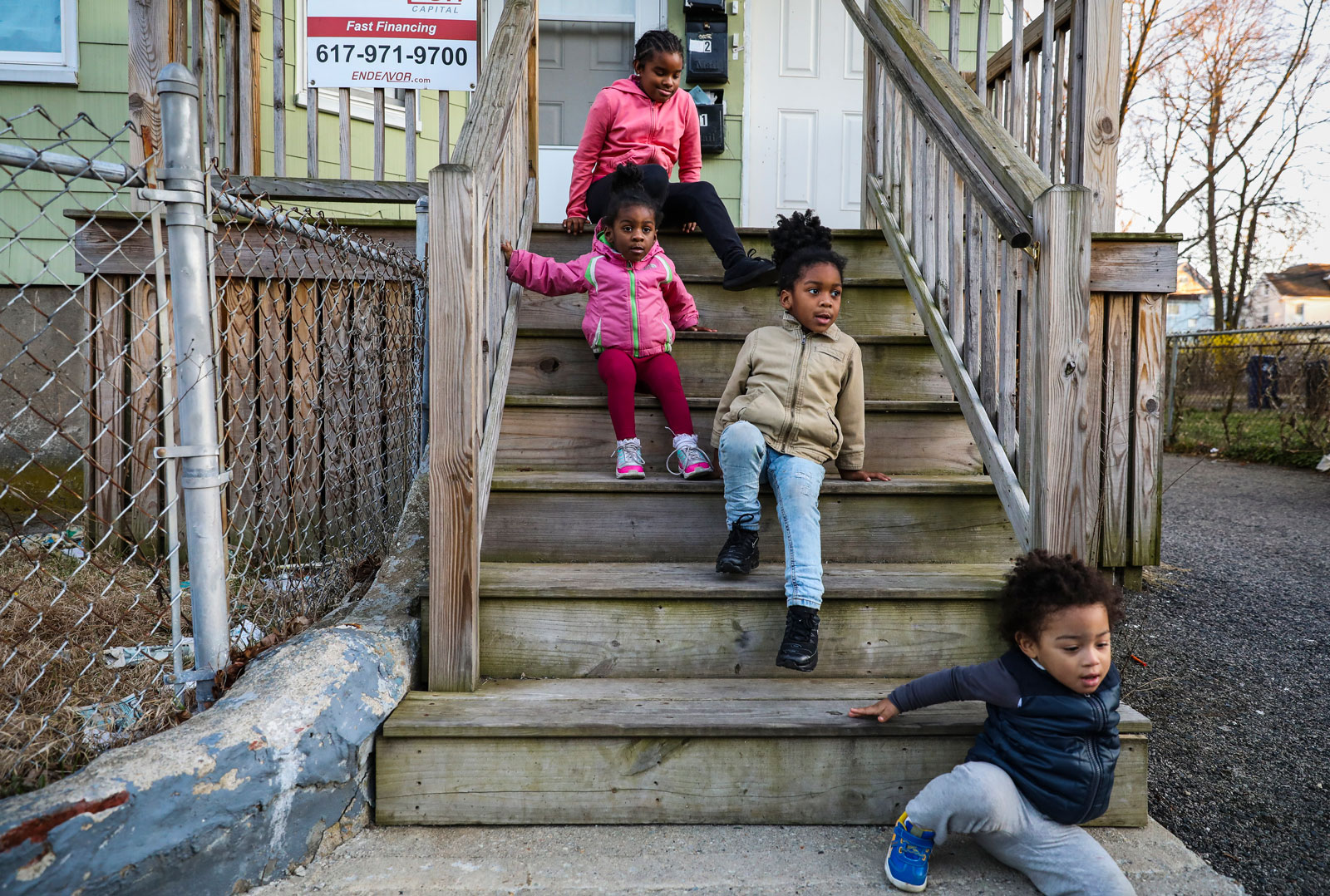
Erin Clark for The Boston Globe via Getty Images
Dash, top, and Dish, bottom, live with their mother Darling in a shelter apartment in Dorchester while Darling studies to be a nurse, Boston, Massachusetts, March 27, 2020; recently, Darling lost her job and her food stamps are running out. On any given night, roughly 12,000 people are without homes across Massachusetts.
Miranda Popkey
April 15, 2020
WATERTOWN, MASSACHUSETTS—Tuesday morning and, as usual, I’m watching a head bob before a verdant if patchily rendered digital landscape. I’m on Zoom, of course, along with a hundred and twenty or so other anti-hunger advocates from across the state of Massachusetts.
For the past year and a half, I’ve worked part-time at a small nonprofit embedded within a much larger nonprofit, first in data entry and now in childcare solutions and case management. Our focus is workforce development: we match clients with and pay for job training. Now that training centers are closed through at least May 4, our students study from home, or try to. We lend them laptops, point them in the direction of low- or (temporarily) no-cost wifi, and otherwise try to connect them and their families to relevant resources. By resources I mean the basics: food and money.
My first few months in the nonprofit human services field were a crash course in acronyms and euphemisms: DTA (Department of Transitional Assistance); TAFDC (Transitional Aid for Families with Dependent Children); SNAP (Supplemental Nutritional Assistance Program). The families we serve are often described as “in transition,” their situation, like the assistance the government offers, by definition (if not in fact) temporary.
Last Tuesday, April 7, we got some numbers. The Massachusetts DTA usually gets about 900 SNAP applications a day; that has jumped to 3,000. Its statewide assistance line usually gets about 2,700 calls a day; now it’s getting roughly 12,000. A follow-up email clarified that the high call volume means many callers are getting automatically disconnected.
Among the recently and unexpectedly unemployed, there has been much confusion about whether and how to apply for federal benefits. I am sympathetic; I have walked clients through any number of benefit applications and experienced this confusion myself. It strikes me that this moment is serving, for those whose previous brushes with state bureaucracy have been confined to lines at the DMV, as a painful lesson in the necessity of a robust and readily accessible social safety net. At least in Massachusetts, it’s easier now than it was two months ago to apply for unemployment benefits, for cash benefits, for SNAP. Still, the onus is on the individual to prove that they deserve the relief the government is offering.
I spent the rest of last week calling the twenty-eight clients in my caseload to see how they were doing. Two months ago, I would have been able to meet with these clients in person. I would have offered them water, or tea, and a chair; I would have, with their permission, closed the door to my office. We might have called one or another overworked department together, on speakerphone, and the minor authority my affiliation affords might have allowed me to press harder for an answer than a client alone would feel comfortable doing. If, still, no answer was forthcoming, I would at least have been able to make eye contact with my client as we spoke about what to do next.
Now, after I get off the phone, I send follow-up emails filled with links: a link to a list of emergency childcare centers; a link to a searchable map of food pantries; a link to a PDF map of food pantries; a link to the application for Residential Assistance for Families in Transition (RAFT); a link to an application for a Visa gift card whose wait list is now several thousand hopeful applicants long. I call community centers across the city looking for baby supplies, and find one with diapers on hand, but in a neighborhood far from most of our clients’ homes. I distribute rideshare codes. I walk a client through IRS Free File options over Google Hangouts. I review a PDF from the Women, Infants, & Children (WIC) Nutrition Program; due to Covid-19, WIC recipients can now purchase 20 oz. breads with their “16 oz. Bread/Whole Grains” benefits. I ask a client to say hi to her baby for me.
“Don’t hesitate to reach out if you need any assistance,” I write at the bottom of an email. “We’re here to help!” ■
Joshua Jelly-Schapiro
April 14, 2020
FIRE ISLAND, NEW YORK—We got out early. We packed the car the day that NYU, where I teach, moved classes online. We wanted to stay in the city, our city. But my mother-in-law, who helps take care of our toddler, is eighty-four. My son is two. In the elevator in our building, as on the street outside, the anxiety was rising. So was the prospect of having to wonder, soon, whether taking our toddler to the park would risk his grandma’s life. We drove over the Triborough Bridge, the four of us, and passed the the big tennis stadium, in Queens, where they play the US Open but whose courts are now a hospital. We parked by the clam place, and got on the boat. We got off at the stop near where we’ve now been socked in, with a couple of space heaters and a lot of beans, for going on five weeks.
The house we’re lucky to have isn’t insulated. It’s a summer place, from the era when that phrase connoted not membership in the 1 percent, but rather that brief epoch of American capitalism, after the war, when people like my mother-in-law—an immigrant from the Caribbean with a good career, but not a financier’s one—could thinkably buy a bungalow by the sea, within driving distance of New York, for her family. Now this place is dotted with houses, with lots of glass, from our new gilded age: monuments to the stock market’s gains since 2009. But most of those houses, when we turned up, were empty. There are no services here in the off-season, or grocery stores. (Getting backup Cheerios and beans requires a trip off-island, or having them sent by boat.) The authorities and scant year-rounders, pointing to those lacks should anyone here fall ill, did a good job of urging people, in the days following our arrival, not to come.
It’s familiar by now: people on islands shouting that mainlanders—New Yorkers, in the northeast—should stay away. Even an island that’s not one—Rhode Island—got in on the trend. From Maine to the Carolinas, many islands where second homes and summer denizens abound have pronounced themselves, this spring, closed to visitors. The more permanent residents and select boards of such places, with ample reason and lack of hospitals, let alone ventilators, have asked people from the outside world not to bring the virus.
Many destination islands around the world, places whose sustenance once came from the sea or the soil but is now by attracting tourists, have done the same. In Barbados, where my wife’s family’s from, there’s a mandatory two-week quarantine in place for anyone coming from abroad. Prince Edward Island in Canada, where mine is from, has shut its bridge. (Barbados has seventy-one confirmed cases and four deaths; Prince Edward Island, twenty-five and zero.) In Cuba (726 confirmed cases, twenty-one deaths), friends say their lives are on pause: cut off, by the lockdown there, from their cousins across town, they’re also cut off from the world. With all flights into or out of Havana halted, they feel like they’re back, after the brief opening of recent years, to where they were in the 1990s: no cash or tourists coming in, no way to leave. One thing Cuba doesn’t lack, should its outbreak worsen, is health-care workers.
Among the world’s last island nations to remain officially virus-free is the Pacific archipelago, Vanuatu, that was just savaged by a cyclone. Now Vanuatu’s leaders are praying, as they reopen the airport they shut to holiday-makers a few weeks ago, that the food and aid they need in the storm’s wake won’t also bring unwanted germs. Hard not to ponder, as they do, the vectors of a virus that whipped around the planet thanks to people who take long-haul flights, from Wuhan to Milan to New York and wherever else, but that most menaces those stuck in place—whether in the densely vibrant immigrant neighborhoods of Queens or on remote islands that are most vulnerable, too, to the worsening storms of a warming planet.
Fire Island is no exception to the latter danger. There’s a reason we’ve been urging my mother-in-law, for years, to sell this place. But for now, at least, we’re glad she hasn’t. A barrier island that rising seas want to reclaim, and shall, is an apt place to contemplate the world’s tumbling into a new epoch. Long Island’s Suffolk County, where we are, is now among the globe’s hottest hotspots. (Current count: 22,462 cases, 608 deaths.) The ferry company here, having warned anyone who’s ill or vulnerable from boarding their vessels, has kept to its winter schedule: one boat a day. But every day, as the weather warms, more people come.
The quiet, still, is something. Usually, several planes per hour pass overhead, en route to JFK. These days, we hear none. My wife and I are learning to fish. Striped bass, our neighbors say, are running in the Great South Bay. The way to catch them from the dock, or so we’re told, is with a buck-tail lure at night.
Is the virus here? Of course it is. We stand ten feet from anyone we meet. No man, the poet said, is an island. But no island is an island, either. ■
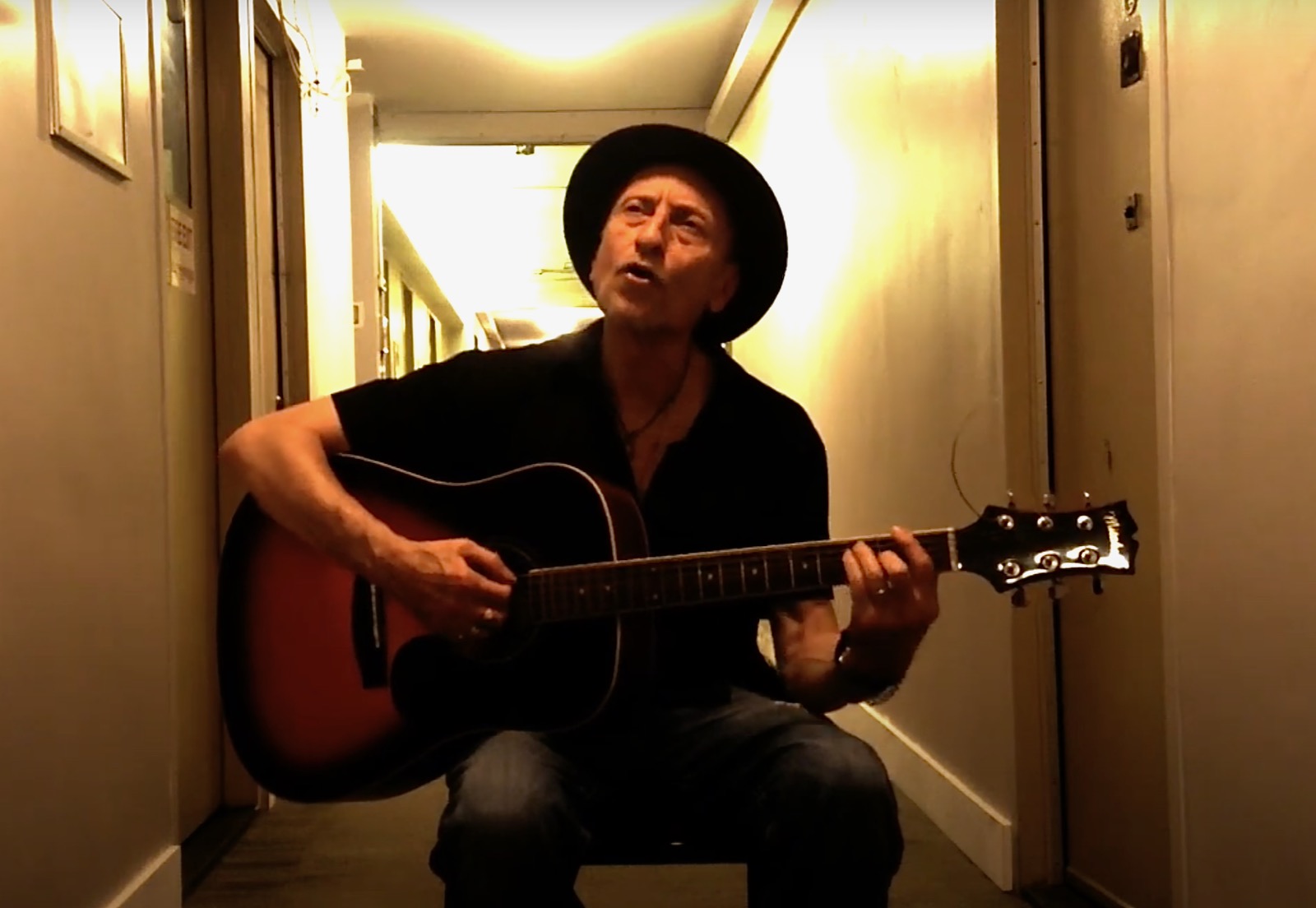
via YouTube
Imre Lodbrog performing “Cyrano”
Dan Chiasson
April 13, 2020
WELLESLEY, MASSACHUSETTS—During the early days of quarantine, back when I was still trying to keep straight which Tolstoy princess had the mole and which had the mustache, and was still forcing my family to gather before the hearth every evening, as our forebears had, to hear the patriarch read poems aloud; before, that is, the fear of becoming very ill, or of losing our home, had really kicked in, I opened The New York Review of Books and turned to the classifieds. Twentieth-century artifacts still gamely chugging along, these notices offer all kinds of enticements: a farmhouse in the Dordogne or Tuscany, a kit for constructing a geodesic dome, a massage of uncertain propriety. I read the following ad:
A CHARISMATIC, AGING FRENCH rock star will compose and record an original song for you, your mom, your lover, or your pet in French, English or Franglais (recommended). US$200. Contact: lodbrogsagent@gmail.com; imrelodbrog.com
The classifieds in the Review tend to be written to a high standard, but there was something unusual about this one that I couldn’t quite describe—since, in fact, I didn’t yet fully detect it. I’d seen offers for commissioned artistic work over the years; this ad seemed quite consciously to offer not only the product itself, but an irresistible narrative. I wouldn’t have bit if I’d encountered it online, or if the singer hadn’t been French, or aging, or charismatic. Imagining that I would need stories to tell after the pandemic passed, I decided that $200 was a small price to pay for one. The song would be almost extra—it would be received as I suspected it was offered, as a kind of prop.
That morning I wrote to the email address listed in the ad:
Bonjour Monsieur,
I am a US professor and I wonder if you would record a song for my two classes which have been suspended, English 120 and English 357? Something sentimental, using those names? I just posted your ad to Twitter and hope you get lots of business!!
Within an hour or so, the rock star’s agent—who identified herself only as “Lodbrog’s Agent”—wrote back from New York City, where the two of them were holed up. Imre Lodbrog would be delighted to compose a song for my classes, if I would send some additional instructions. So I sent a poem, Emily Dickinson’s “I’m Nobody,” and made just one request: that he use my course numbers in the refrain. I was amused by the idea of asking a charismatic French rock star to sing a heartbroken tune to a most unlikely amant: the catalog numbers of my classes. I proposed that Lodbrog—whose moody, gravelly songs I had, by that point, discovered online—also record a video, for an additional $200. Lodbrog’s Agent accepted my pitch, and we were off to the races.
By this point, I had begun to suspect that, in orchestrating my stunt, I had also become entangled in one. This wasn’t the story I imagined; it was not even, apparently, mine to tell. On Lodbrog’s website, under the section labeled “The Man,” I found, instead of a short bio, a mirror image of my curiosity, slightly intensified as though I’d arrived there after a years-long quest: “Who the hell is Imre Lodbrog,” it read: “Somebody said, ‘He’s like Serge Gainsbourg on ’shrooms.’” It seemed that the construction “Imre Lodbrog” had been designed, in part, as a ruse. But by whom, and why? A longer version of his classified appears under the section “Hired Gun,” describing him as “a softy and a socialist,” and offering his services on a sliding fee scale—as though $200 weren’t already an insane bargain. Beyond those scant details, nothing—except for a link to a book about Lodbrog that “we wrote.”
Last week the song arrived, a twangy, jangly number, utterly infectious, called “Cyrano”; today, the video appeared in my inbox, filmed in a New York desolated by the pandemic. Images of what looked to me like an intersection in the East Village—empty except for a few masked pedestrians—fade to archival footage of the same spot filled with dancers and revelers. The multiple fades of the video suggest the ghost lives we are now living. Both song and video give off a faint whiff of serioludere, with their intentionally broad gestures toward rock-star preening. And yet both are, to me, indescribably beautiful. Lodbrog’s Agent had written to ask if I was OK with his incorporating the story of Cyrano de Bergerac, because, as she put it, “he’s French.” I happily consented. It was a lark. But when I listened to the lyrics, I realized that Lodbrog had assumed the mantle of professor, teaching his own lesson to a group of captivated strangers, my students:
ENGLISH 120 ENGLISH 357
I AM NOBODY WHO ARE YOU?
NOBODY TOO AH PLEASED TO MEET YOUDO YOU KNOW CYRANO
WHO SPOKE SOMEBODY’S LOVE THROUGH HIS HEART
OH MAN HOW DREARY TO BE
SOMEBODYI AM HERE YOU ARE THERE
SO LET ME SING THIS LITTLE TUNE TO YA ALL
AND KEEP IT WARM UNTIL THE LIVELONG JUNE
The song continues in this vein for several more verses, adapting Dickinson’s existentially amiable little poem to this new scenario, where Lodbrog—a “nobody”—greets his fellow nobodies, me and my students. The beautifully open-hearted question, “Do you know Cyrano,” is Lodbrog’s own moment of pedagogy. If you don’t know him, I told my students, you should get to know him.
Lodbrog and his agent—whom I have discovered to be none other than Barbara Browning, the distinguished scholar of Brazilian music, and a dancer and performance artist who teaches at NYU—co-authored their quite wonderful book, Who the Hell Is Imre Lodbrog. I wouldn’t dare spoil their story, since it’s such a good one. As for this story, I have no idea how to tell it: Am I its author or its protagonist? Who the hell is Dan Chiasson?
“Cyrano” ends with a lovely conjuring of our current, frightening hiatus, and of some of the ways human connection might be reconceived in the time of Covid-19. Let’s hope Lodbrog is right about “the sunny livelong June”:
I AM THERE YOU ARE HERE
AND THAT’S THE MAGIC OF THE TRICK
A FEW WORDS AND A LITTLE TUNE
A TINY FLAME TO LIGHT UP THE GLOOM
UNTIL THE SUNNY LIVELONG JUNE
TO KEEP US ALL TOGETHER IN THIS EMPTY
CLASSROOM
From April 6–12: Arthur Longworth in Monroe • Mira Kamdar in Videlles • Christopher Benfey in Amherst • Nathaniel Rich in New Orleans • Ariel Dorfman in Durham • Zoé Samudzi in Windhoek • Dalia Hatuqa in Amman • Hugh Eakin in Minneapolis–St. Paul • Verlyn Klinkenborg in East Chatham
From March 30–April 5: Ian Johnson in Beijing and London • Tim Flannery in Sydney • Liza Batkin in Rhinebeck • Carl Elliott in Auckland • Edward Stephens in Athens • Jamie Quatro in Chattanooga • Ali Bhutto in Karachi • Nicole Rudick in South Orange • Andrew McGee in New York • Danny Lyon in Bernalillo
From March 23–29: Sylvia Poggioli in Rome 🔊 • Jenny Uglow in Cumbria • Minae Mizumura in Tokyo 🔊 • Hari Kunzru in Brooklyn 🔊 • Rachael Bedard in Brooklyn • Lucy Jakub in Northampton 🔊 • Alma Guillermoprieto in Bogotá 🔊 • Nick Laird in Kerhonkson • Caitlin L. Chandler in Berlin • Yiyun Li in Princeton • Lucy McKeon in Brooklyn • Dominique Eddé in Beirut • Zoë Schlanger in Brooklyn • Ursula Lindsey in Amman • Nilanjana Roy in New Delhi • George Weld in Brooklyn • Richard Ford in East Boothbay • Eula Biss in Evanston • Martin Filler in Southampton • Ben Mauk in Penang • Michael S. Roth in Middletown 🔊 • Sue Halpern in Ripton • Ivan Sršen in Zagreb • Tom Bachtell in Chicago • Adam Foulds in Toronto 🔊 • E. Tammy Kim in Brooklyn • Keija Parssinen in Granville • Yasmine El Rashidi in Cairo • Merve Emre in Oxford • Tolu Ogunlesi in Lagos • Verlyn Klinkenborg in East Chatham • Rahmane Idrissa in Naimey • Aida Alami in Paris • Raquel Salas Rivera in San Juan • Michael Greenberg in Brooklyn
From March 17–22: Madeleine Schwartz in Brooklyn 🔊 • Anne Enright in Dublin 🔊 • Joshua Hunt in Busan 🔊 • Anna Badkhen in Lalibela • Lauren Groff in Gainesville 🔊 • Christopher Robbins in New York • Elisa Gabbert in Denver 🔊 • Ian Jack in London • Vanessa Barbara in São Paolo • Rachel Pearson in San Antonio • A.E. Stallings in Athens • Simon Callow in London 🔊 • Mark Gevisser in Cape Town 🔊 • Sarah Manguso in Los Angeles • Ruth Margalit in Tel Aviv 🔊 • Miguel-Anxo Murado in Madrid 🔊 • Tim Parks in Milan • Eduardo Halfon in Paris 🔊 • Anastasia Edel in Oakland 🔊


